Stories of Mavericks
Pushing Further:

The NASA Psychologist

‘Enterprise’-ing Authors
An Insider’s View of the James Webb Telescope
Virtual Reality and Social Work
...and vastly more.

Stories of Mavericks
Pushing Further:

The NASA Psychologist

‘Enterprise’-ing Authors
An Insider’s View of the James Webb Telescope
Virtual Reality and Social Work
...and vastly more.
The dance “Artificial Intelligence” choreographed by dance professor Daniel Stark, was performed in the spring dance concert in April at the Ted Paul Theatre by dancers Joe Sihel and Gwen Ukestad with costumes by David McCarl and lights by Finley Alexander.

Edward Inch, President
David Hood, Provost and Senior Vice President for Academic Affairs
Lynn Akey, Vice President for Student Success, Analytics and Integrated Planning
Mark Johnson, Vice President for IT Solutions & CIO
David Jones, Vice President for Student Affairs & Enrollment Management

Henry Morris, Vice President for Diversity, Equity & Inclusion
Kent Stanley, Vice President for University Advancement

Richard Straka, Vice President for Finance & Administration
Sheri Sargent, Chief of Staff
What else is out there? Our editors for the TODAY magazine pose the question on this issue’s cover and in the stories within. It’s an apt theme; Mavericks have always been motivated, curious and driven to push boundaries and discover possibilities.
This issue of TODAY illustrates how ingrained that motivation is in Minnesota State Mankato’s faculty, current students and alumni, and how their curious minds are changing our world.
FALL 2023
VOLUME 25 ISSUE 1
EDITORIAL DIRECTOR Sara Gilbert Frederick
EDITOR Joe Tougas '86
DESIGNER James Mackey

ORIGINAL PHOTOS John Cross, Vanessa Knewtson, Steve Woit
ILLUSTRATIONS Shelley Caldwell ’15, ’17, Bryan Holland
PRINTER Corporate Graphics Commercial
WRITERS Grace Brandt ’13, Amanda Dyslin ’03, ’14, Emily Frederick, Helen Healy ’92, Lenny Koupal, Drew Lyon ’06, Robb Murray ’95, Kathryn Petzel x’23, PRINT COORDINATOR Ryan Schuh '00
CONTRIBUTING STAFF Dan Benson, Kim Rademaker ’93, Connie Wodtke ’91
TODAY is published once per year by the Division of University Advancement. TODAY is distributed to more than 120,000 alumni and friends.
The mission of TODAY is to entertain, to inform and to connect the reader to the campus. TODAY welcomes story ideas supporting this mission. Full manuscripts are not accepted. TODAY is not responsible for unsolicited material. TODAY is copyrighted in its entirety. This volume and all articles, images and photographs within may not be reproduced in any form without written permission of the editor.
ADDRESS CHANGES & CLASS NOTES: Send to TODAY, Class Notes & Address Changes, Minnesota State University, Mankato, 232 Alumni Foundation Center, Mankato, MN 56001, e-mail to today@mnsu.edu, by fax to 507-389-2069 or call 507-389-2523. Death announcements must be accompanied by a memorial service program or published newspaper obituary.
LETTERS: Send letters intended for publication to TODAY, Minnesota State University, Mankato, 232 Alumni Foundation Center, Mankato, MN 56001, e-mail to today@mnsu.edu or fax to 507-389-2069. TODAY reserves the right to edit letters for space and clarity. Include name, address, graduation year and daytime telephone number. Unsigned letters are not considered for publication. All letters become property of TODAY. Submission of your letter constitutes your permission to publish it.
This document is available in alternative format to individuals with disabilities by contacting the magazine staff at the address, e-mail, and/or fax number listed above or at 800-627-3529 or 711 (MRS/TTY). INMK14OT 06-23
To that end, inside you’ll find features on:
• An alum who is a psychologist with NASA and helps screen job candidates (yes, including astronauts).
• How virtual reality is helping train social work students to spot warning signs in homes.
• A faculty member with experience related to the James Webb telescope, which has provided us with unprecedented insights of our place in the universe.
• How our data sciences programs are expanding and providing talent to major employers in the area, including Taylor Corporation.
And there’s more. You’ll notice this issue of TODAY is larger, almost twice the size of previous issues. This expanded size has allowed for more stories of Mavericks on their home turf and out in the world, from a successful comic actor stretching his acting muscles in “Lucky Hank” to the first woman director of the British Council in Azerbaijan. These and other stories within remind me how Mavericks contribute to the world around us in so many disciplines. This University works for the world, and it works well.
The issue also devotes a few colorful pages to looking back at a phenomenal year at the University. And it was a terrific year. As we start a new one, I am energized by the opportunities we have to teach, to learn and to wonder together … what else is out there?
Go Mavs!
Edward Inch PresidentYOU HEARD ME CORRECTLY 16 A Q & A with speech professor and pathologist Dani Scott on African American English as a language, not dialect.
By Joe Tougas ’86LOOKING INTO ANOTHER WORLD
17
Astronomy professor Michael Rutkowski has some literal insight on NASA’s star telescope.
By Emily FrederickA DRAMATIC TURN
Cedric Yarbrough peaks on"Lucky Hank."
By Joe Tougas ’8618
DOLLARS
14 Financial planning students host a podcast giving guidance to fellow students on how to save, manage and invest money.
By Grace Brandt ‘13THE FIRST OF HER KIND
20
As the first woman and native citizen of Azerbaijan to take on the role as director of the British Council, Nargiz Hajiyeva shares how the University played its part in her success.
By Joe Tougas ’86GAME ON 15
Esports player Alysha Strunk is competing on a professional level.
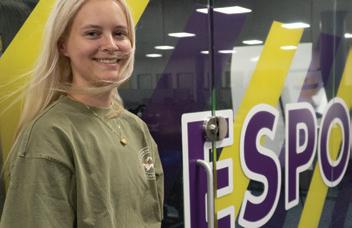
 By Kathryn Petzel x’23
By Kathryn Petzel x’23
A FAMILY HISTORY LESSON 22
One student’s assignment in a WWII history class was helped considerably by his 97-year-old greatgrandfather, a war veteran.
 By
By
Joe
Tougas ’86UNIQUE FIXER-UPPER
26
A new virtual reality program is designed to help social work students ID problematic scenes.
By Joe Tougas ’86GEARING UP AND GIVING BACK
30
Alums Adam Thielen and Michael Jordan team up with a new line of clothing.
By Joe Tougas ’86“I HAVE A QUESTION…”
34
An alum of I/O Psychology shares how a University field trip changed his career trajectory, landing him a job as a NASA psychologist.
By Joe Tougas ’86LESSONS FROM THE CAPTAIN'S CHAIR
36
An instructor and former student have drawn from the "Star Trek” universe to teach leadership styles. Now they’ve developed their own book on the topic.
By Amanda Dyslin ’03, ’14MORE THAN A DREAM
38
Students' interest in the data sciences master’s program continues to grow—as does interest from employers such as Taylor Corporation.
By Robb Murray ’95THE WORLD IN THEIR HANDS
40
The University’s handball team, a non-official varsity sport, is a national title-grabbing force gaining an international reputation.
 By Drew Lyon ’06
By Drew Lyon ’06
TRUMPETING A LEARNING LIFE
42
Provost David Hood shares how hard work and investing in others is vital for academic success.
By Lenny KoupalNICK OF TIME
44
Inspired by a rich but short life, an alum created a nursing endowment that will keep a young man’s memory alive.
By Amanda Dyslin ’03, ’14FAST FRIENDS
Recordbreaking track athletes Denisha Cartwright and Makayla Jackson are inspiring everybody, including each other.
 By Joe Tougas ’86
By Joe Tougas ’86
LONG-TERM SOIL SOLUTIONS
46
48
The Geology Department received a grant to work with other universities and agriculture organizations in search of climate smart solutions. Students are helping put the measures into practice.
By Drew Lyon ‘06EIGHT IS GREAT
Nick Huynh is the latest of eight Minnesota State Mankato graduates in his family.
By Robb Murray ‘95CLASS NOTES
ALUMNI INFORMATION
58
50
59
As the University Dining Center continues to serve students and faculty along with a variety of guests who visit campus, it also continues to make a positive impact on the environment and the bottom line. Designed in 2013 and opened in January of 2017, sustainability has always been at the forefront of its operation. The goal was to not just make a sustainable structure, but one that also creates incremental value through energy savings and minimizing unnecessary labor. From the window design to the garbage disposal that extracts water from food waste to its upgraded HVAC system, the building is a model of environmental compatibility, and the stats are in to prove it.

8 of 9
Top allergens avoided at the Simple Serving Station, designed to promote inclusivity for those with food allergies.
25
Percent of power density reduction by using LED lighting.



92

Percent of trash volume reduced.
565,460
Pounds total of compost in 2022.
—Kathryn Petzel x’235
Years in which the additional costs of the building savings initiatives were paid off through energy savings.



14
Years before the building will need major repairs or replacement.
540,493
Meals served in 2022.
Reusable to-go containers were used in 2022.
Number of dining stations. Daily vegan options.


Annually saved in energy costs in overall power usage.
100 10 $64,000 TODAY.MAGAZINE.MNSU.EDU FALL 2023 TODAY 7
Seung Bach became the next dean of the University’s College of Business in July. He succeeds Brenda Flannery, who served as dean since July 2011 and will return to the Minnesota State Mankato faculty after an earned sabbatical.
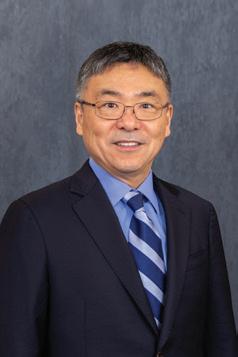
Former provost and VP for academic and student affairs Scott Olson was named Chancellor of the Minnesota State system. Olson was provost at Minnesota State Mankato for nine years, leaving in 2012 to take the presidency of Winona State University.
Luke Strand was named head coach for the men’s hockey team, the fifth coach in the program’s history. Strand spent the previous year as an assistant at Ohio State, and replaced Maverick coach Mike Hastings, who took on head coach duties at University of Wisconsin, Madison.
Minnesota State Mankato Provost and Senior Vice President for Academic Affairs David Hood and Christian G. Reyes, rector/president of Universidad Politecnica de Santa Rosa Jauregui in Querétaro, Mexico, signed a Memorandum of Understanding at the University in May. The agreement enables the universities to host students on each campus for study, faculty members to collaborate on teaching and research and activities around projects intended to benefit communities in both countries.
In April, Blue Cross and Blue Shield of Minnesota pledged $600,000, over a three-year span to establish the operational structure, advance the growth and secure naming rights for the Center for Rural Behavioral Health at the University. The collaboration will promote the mission of the Center for Rural Behavioral Health, which aims to improve access to mental health care in rural and outstate Minnesota.
“Wounded Healers,” a music and spoken-word theater production written and composed by University administrator and faculty member Timothy Berry, received seven national awards from the Kennedy Center American College Theatre Festival in March. The production showcases a historical chronology of how Black male bodies physically carry neurological trauma due to structural and systemic racism.
The University’s Maverick Vocal Precision a cappella group was selected in March to compete in the Acapocalypse vocal music competition/festival in Port Washington, Wisconsin.
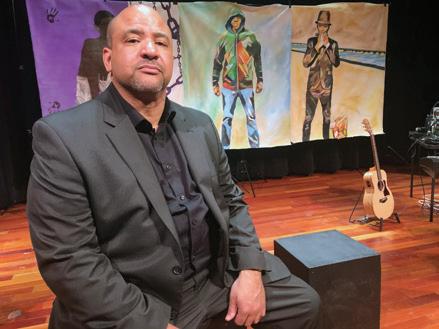
Minnesota State Mankato Alumni Association presented distinguished alumni awards to three graduates in February. The honorees were David Backes ’14, Achievement Award; Aaron Holm ‘90, Harold J. Fitterer Service Award; and Nelsie Yang ’17, Outstanding Young Alumni Award.
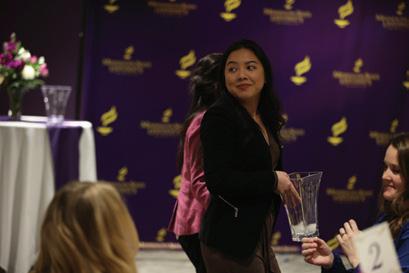

Minnesota State, the system of 26 state colleges and seven state universities, released study results in January that estimated the impact of Minnesota State Mankato on the regional economy to be $827.2 million and 5,884 jobs.
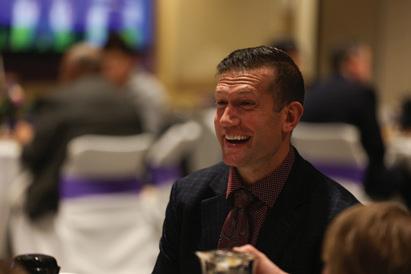
In January the University launched Minnesota Polytechnic and Applied Learning Institute (MinnPoly), the first and only polytechnic institute in Minnesota, which will provide a training program based on a combination of project- and work-based learning that connects students with potential employers.

Minnesota State Mankato ranked ninth nationally in international student population among other master’s institutions in the annual “Open Doors Report,” released by the Institute of International Education, in November, moving up three spots from the year prior.

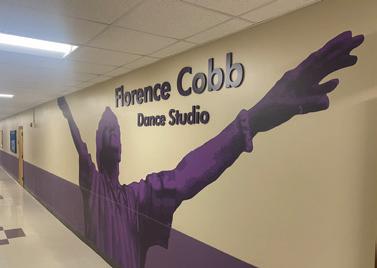
The Minnesota State system awarded former University President Richard Davenport with the title of President Emeritus, a special honor for retired presidents who have served with great distinction, in November.

Former president Richard Davenport.
In November five faculty members were awarded a six-year, $1.5 million grant from the National Science Foundation to fund student scholarships and maintain the University’s Research Immersive Scholastic Experience in Biology (RISEbio) program. The project is led by Rachel Cohen, along with co-principal investigators Allison Land, Brittany Smith, David Sharlin and Brian Martensen.
Minnesota State Mankato entered into several collaborations with schools, including Minnesota North College, North Hennepin Community College, Normandale Community College and Northland Community & Technical College to help ensure seamless transfers for associate of science nursing graduates to the University’s 100 percent online RN Baccalaureate Completion Program.
The University’s special education and school psychology graduate programs were awarded a five-year, $1.2 million training grant from U.S. Department of Education to fund Project PASS-IT in October.
Project PASS-IT (Promoting Academic Success of Students with high-intensity needs through Interdisciplinary Training) will provide training to future special education teachers and school psychologists.
In August 2022, Phillip Larson, co-director of the EARTH Systems Laboratory and director of its Earth Science Programs, was among nine lead scientists from five universities awarded $2.8 million in a collaborative National Science Foundation “Frontier Research in Earth Sciences” grant. The funding will be used to study the formation and evolution of the Lake Superior basin, to improve predictions about changes in glaciers, landscapes and Earth’s structure across the globe.
Earth Science program director Phillip Larson.

A quick sampling of the colorful events over the past year at Minnesota State Mankato.
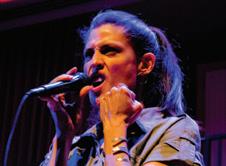


pretty scenes across campus in

Stomper in a rare icy disposition.
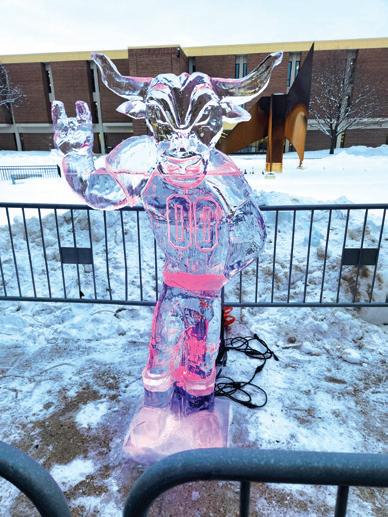 Rapper and writer Dessa performed in April with the return of the music program’s Storyteller series.
Concert lighting, sound and a live DJ made Galactic Bingo a favorite event of the fall.
Rapper and writer Dessa performed in April with the return of the music program’s Storyteller series.
Concert lighting, sound and a live DJ made Galactic Bingo a favorite event of the fall.
Lexi Hurst’s last throw as a Maverick broke a school record and gave her a national title in the NCAA Division II shotput in June.
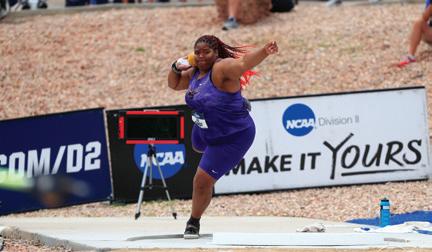
Longtime

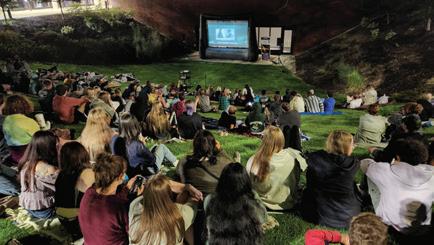


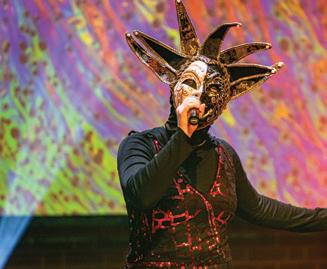 theater director and department chair Paul Hustoles cracks up at his retirement party in spring. Attendees were former students and colleagues from around the country.
A performer at the Masked Maverick competition in March.
The 2022 Homecoming Lip Sync contest was won by the team MavAsians.
theater director and department chair Paul Hustoles cracks up at his retirement party in spring. Attendees were former students and colleagues from around the country.
A performer at the Masked Maverick competition in March.
The 2022 Homecoming Lip Sync contest was won by the team MavAsians.
Rochester native Aidan Ryan knew that he wanted to pursue a career in financial planning or wealth management ever since he was in high school, and he chose Minnesota State University, Mankato in part because the University’s finance program fulfills the requirements needed to sit for the Certified Financial Planner exam right after graduation.
But Ryan isn’t waiting until after graduation to start helping people achieve financial stability. He’s helping his fellow college students now in a few ways, most notably as he co-hosts “Mav Money Talk,” a podcast aimed at helping students with financial issues in their lives.
The podcast came about through the University’s Financial Planning Club. In the summer of 2022, he and fellow members Austin Deike and Charlie Frazzini were brainstorming ways to tackle financial literacy and education to help other college students. Working with their faculty advisor, Professor Daniel Hiebert, they came up with the idea of hosting a podcast, and “MoneyTalk” was born.
“We recognized there was a problem and severe lack of basic financial literacy among college students,” Ryan said. “We thought it would be fun to cover more basic and even some complex topics. The whole purpose was to give a little bit of expert finance knowledge and support to students of the University by students.”
The three co-hosts started with a goal of producing five episodes for the first semester, or about one episode a month. The planning and background work happened that summer, while episodes were recorded once the fall semester began. Episodes have covered everything from budgeting to what benefits are important when job hunting. They’ve also brought in guests from the financial planning industry to share their own knowledge.
“We have a lot of really good students, [but] I think Austin, Charlie and Aidan really stand out by taking the initiative to get things like the podcast started,” Hiebert said. “I think that they really wanted to have this podcast as a team effort. They do the best they can to function as a team. Hats off to all three.”
The three students work with the University radio station, KMSU, to have their podcast edited and formatted for publication. They also work with the College of Business’ communications director. Ryan said there may be more University partnerships in the future.
While the podcast just started streaming in Fall 2022, it has been slowly gaining traction, even outside of Mankato. Hiebert said that the episodes have been popular with the University’s alumni network, as well as wealth management firms across the area. Some firms even share the podcast as a way to help support clients with kids or grandkids attending college. Ryan is hoping more students will become involved in the future, allowing them to upload 10 episodes in fall. “We just got it off the ground [last] year, and we’re hoping to really forge it into something pretty cool in the next few semesters,” he said.
Find the Mav Money Talk podcast at https://cob.mnsu.edu/academics/finance/ mav-money-talk-podcast/
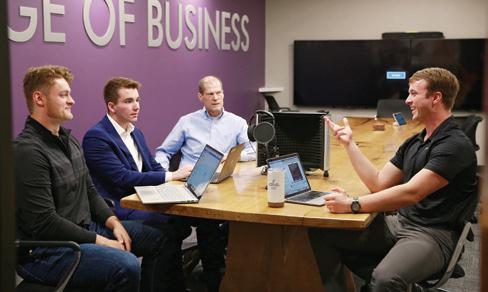 ’13
Mav Money Talk podcast hosts, from left, senior Charlie Frazzini, junior Aidan Ryan, business professor Daniel Hiebert and alum Austin Deike ‘23.
’13
Mav Money Talk podcast hosts, from left, senior Charlie Frazzini, junior Aidan Ryan, business professor Daniel Hiebert and alum Austin Deike ‘23.
Alysha Strunk doesn’t quite remember everything about the original “Call of Duty” video game she started playing when she was around 8 years old. But she does remember the inclusion she felt when her older brother handed her a remote asking her, “You want to play?”
Now a senior at Minnesota State Mankato, Strunk was accepted in June into a professional “Call of Duty” team in Canada—the world’s first professional, all-women “Call of Duty team.” Her team: Toronto Tsunami. Her title: Toronto Razor. Their game: “Call of Duty: Modern Warfare II.” Originally brought in as a main substitute for the team of five players, by summer she was being trained to play with the main team for the Female Pro Circuit “Call of Duty” league.
Strunk has been part of the University’s esports program since it was launched in fall of 2020.
“During my first year on the team there wasn’t that much attention towards the program, but as we started streaming our matches, doing tabling at the CSU, going to other esport events, we started to receive a lot more attention,” Strunk said.
As a part of the University’s varsity team, Strunk has seen the program grow to inlcude more than 500 students and employ more than 10 student workers.
It was in the Maverick Esports realm, playing with other students, that she was able to hone her skills as a gamer. In the process, she said, her skills at communication and teamwork have also grown.

“I’ve never been the best at communicating with people. Since the game requires you to talk, you have to communicate with everyone,” Strunk said.
It has also helped her develop her professional networking skills.
“If I do want to work in the esports industry after college, I will know a lot of people who I can reach out to,” Strunk said.
Jacquie Lamm, the University’s esports head coach, said the “Call of Duty” varsity league has been a showcase for the esports program. Maverick esports players have won titles in the state as well as placing first in the yearly LAN (Local Area Network) tournament hosted in fall 2022 by the University.
Lamm said Strunk is a well-rounded student and player.
“She communicates really well and that’s one of the best things we look for in players,” Lamm said. “She openly accepts criticism from her coaches and her teammates, and I think that’s what got her into the pro circuit.”
Strunk said she doesn’t see herself making a living as a professional player, though she isn’t opposed if a team seeks her out after college. A major in sport management and coaching, she’s interested in coaching softball, baseball, volleyball and basketball. The teamwork skills she’s developing in esports, she said, will transfer nicely to a potential career in sport management.
“I chose the major because I have always loved playing and watching sports while growing up,” she said. “They have always been a part of my life and I want to make it into a career and do something that I love.”
It wasn’t until Danielle Scott was a graduate student that she discovered African American English was considered a language and not a casual, Black-culture dialect. Today a speech-language pathologist and professor in Speech, Hearing and Rehabilitation Services at Minnesota State Mankato, Scott recalled the revelation in a Social Issues course. That discovery led her down a path of linguists, researchers and English teachers who opened the story wider and led her to fascinating insights about how Black people communicate—and why so often to confused reactions. Scott often presents research on the topic of African American English in talks and in her classes.
What was your first exposure to African American English’s clashing with common English speech?
I was in my grad program, one of two Black people, and I realized around maybe the first semester that people were laughing at me when I was speaking in class. And one of the things I would say is “Can I axe a question?” And in African-American English you don’t say assssk. Because you don’t aspirate something with the s and the k mixed together, you don’t say it like that, you say “axe.” So it’s like a-x-e ... You say it like that and every time I would ask a question they would laugh. And I didn’t know why.
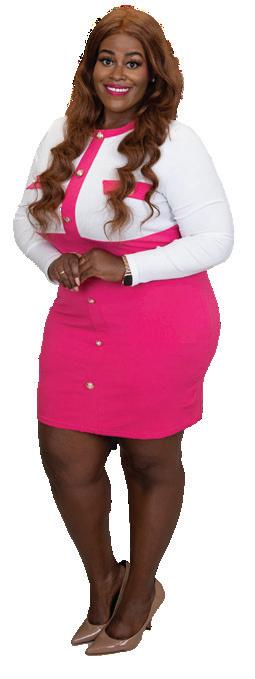
Then I’m reading this article by all these psychologists and it has all these examples of phonological aspects of African American English. I see “axe” and I’m like ‘Oh my god, so I’m not incorrect, I’m not saying it wrong.’ It was liberating for me. Since then I’ve just been doing my due diligence to study as much as I can because it liberates me but also because I know what it is like.
That helped you understand, but it likely didn’t stop the response of people who thought you were talking poorly.
Yeah, I mean even through the Ph.D., the biggest thing was “You’re such a good writer but it’s so surprising that your grammar….” It all came back to that. But I think I’m able to advocate for myself more because now I know that this is my language. So to me, it’s more than code-switching. The process of me writing is very similar to a bilingual person who is translating in their head.
With a lot of African American English, the grammar has to do with order and inversion. The way that I write is similar to the way that I ask questions, and the way that I ask questions is rooted in African thinking.
That is what the debate is: Is African American English a language or is it a dialect? And I’m leaning more on the fact that it is a language. Language is made up of phonology, morphology, syn tax, semantics, and social-pragmat ics. And thinking about phonology, it’s the sounds that you use.
The way I learned a language sys tem is going to be different [be cause] the sound system is differ ent. For example, what all kids do is they use phonological processes. That’s why it’s really cute when kids say “wewwo” instead of “yel low.” But they all do it because it’s a mark of maturity, and if you don’t grow out of that by 5 or 6 it’s not cute anymore. That’s a phonological pro cess they haven’t matured from. So the way they’re learning the sound system is different. And it’s very similar in African American English. Our phonology is dif ferent, our morphology is different, it’s a completely different syntax.
So that’s the language one learns as opposed to ‘growing out of it.’
Yes, it’s the language. There’s research that refers to it as the remnant of our mother tongue. Meaning it is a symbol of transatlantic slave trade, when enslaved Africans or African people were brought from all these different tribes who spoke many different languages and they weren’t really allowed to speak their native, tribal languages. But even the English they were exposed to was not really standard American English. You know, if you were a rich white person, you weren’t on the cotton field. If you think about who the slaves were around, they weren’t around standard American English. You have a mixture of the African tribal language and English and putting that together.
African American English is a coded language because they would intentionally use phrases, invert things to disguise what they were saying so the white people didn’t know what they were saying. So that’s more than a dialect. It’s our language of survival.
When NASA first released its breathtaking photos from the James Webb Space Telescope on July 12, 2022 it became clear immediately that we had entered a new era in space discovery. These spectacular images showed the vastness of deep space, nearby galaxies and our own home galaxy in ways we could only imagine seeing just a few years prior.
Michael Rutkowski, astronomy professor at Minnesota State Mankato, has since grad school been a member of a research team with the instrument and, more recently, has worked with independent teams that have been awarded hundreds of hours of observations—access Rutkowski is able to offer his Minnesota State Mankato astronomy students.
In all cases, the teams provided NASA with a wish list of how specifically the telescope could be used.
“You don’t just build a telescope and then come up with what to do,” he said of how NASA operates. “You build a telescope to do some sort of science.” In building the JWST, NASA sought input from astronomers around the world. The group Rutkowski served requested a telescope that would be capable of answering century-old questions of galaxy evolution.
NASA, in turn, provided several hundred hours of observation time as a thanks for the investment of time and effort in the design of the telescope’s mission, Rutkowski said.
More recently he has worked with two other independent teams that have been awarded hundreds of hours of observations. His students, he said, are among the few people in the world privy to such data, and are already working to make discoveries in star formation and galaxy mergers.
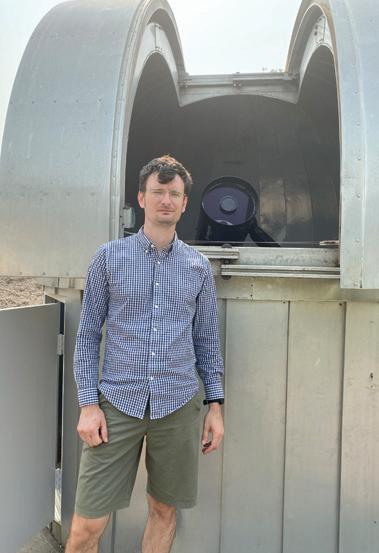
The extent to which the JWST will advance already astounding levels of understanding is exciting, he said. “When I was born, the astronomy community had really heated debates as to whether the universe was 20 billion or 10 billion years old. But the scientific methodology has so improved that now we only debate the value of the age behind the decimal place,” he said. “As an analogy, imagine not knowing whether your grandmother was born in the 19th or 21st century. But, today with the benefit of new technology, you were able to improve the accuracy of their age that you now debate whether it was July or August of 1941.”
This rapid evolution in our understanding applies throughout the astrophysical community: on the life and death of stars, planets around other stars, the growth and evolution of galaxies. Rutkowski said he’s most interested in seeing how distant, massive galaxies that aren’t actively forming stars produce and maintain dust—particles that can range in size from minute molecules to grains that are building blocks of planets. All of this helps teach the subject as well as counter, correct or correlate with information out in the vast reaches of online science.
“When my students comment that they saw a YouTube video, news article or something on social media, I can give them the context,” he said. “There are plenty of science social media ‘influencers’ that show the flashy, exotic side of physics and astronomy, but there’s usually no explanation behind it.
“I can educate them on the physics, the mathematics behind their findings and explain the full story that they aren’t going to find in a textbook or in the article itself. I can say with confidence to them ‘This is what we know to be true and this how we think we might answer these big questions on meaningful timescales for human beings.’"
Michael Rutkowski connects students with NASA’s James Webb telescopeCedric Yarbrough’s acting career is peaking again.
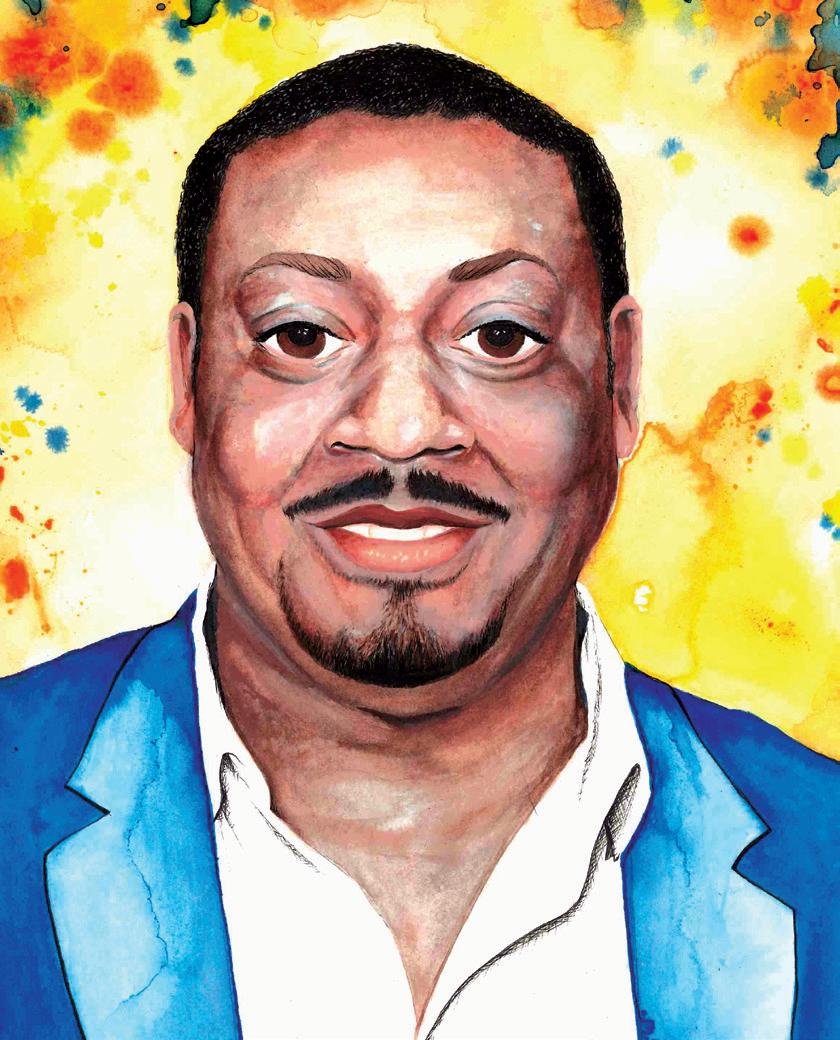 By Joe Tougas ’86
By Joe Tougas ’86
There’s a moment in the new AMC show “Lucky Hank” that crystalizes Paul Rourke, an English professor played by actor and former University theatre student Cedric Yarbrough. It’s two lines and a few seconds in which Yarbrough nails it all—the seething, the weariness and the resentment, all with a dark comic punch.
Rourke and his wife are arriving cheerfully enough at a dinner party hosted by the department chair, for whom Rourke holds more than a bit of animosity. Before Yarbrough’s character is even in the house, he’s asked by the host to help move an old and heavy grandfather clock into the home.
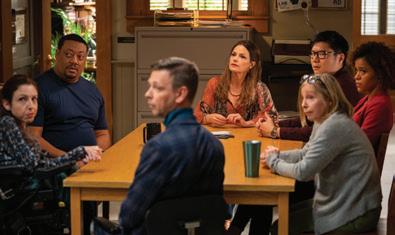
Rourke, holding the obligatory bottle of wine, eyes the clock in the yard for a few seconds. With a sarcastic smile and almost poking his host with the bottle, Rourke says: “Oh, would you also like me to bust up a chifforobe?” The smile drops and he walks in, murmuring: “I’m not your moving company.”
You don’t need to know what a chifforobe is or the line’s dark reference of “To Kill A Mockingbird” for the moment to work so well, with Yarbrough’s nuance and conviction at full steam.
“He’s very driven,” Yarbrough said of his character. “He doesn’t suffer fools very often and he has a certain standard that he lives by, and he requires that of people he works with. And of his students. If you don’t match that or if he can see a flaw in you, he will point it out and make sure that you know that you’re terrible at what you do. He’s that kind of guy.”
“Lucky Hank” is a series rooted in the English department of a small East Coast college where everybody seems to be struggling with their purpose in life. It’s a true ensemble cast led by actor, writer and director Bob Odenkirk, the lead character in AMC’s hit “Better Call Saul,” itself an offshoot of “Breaking Bad.”
After leaving the University’s theater department in 1996, Yarbrough went through the improvisational comedy group Dudley Riggs Brave New Workshop before hitting it in Hollywood as a key cast member of “Reno 911.” He has enjoyed a versatile career in film and TV that seems to be hitting highs of late with roles in “The Boondocks” and “Fired on Mars” animated series to comic roles in “Speechless” and “Carol’s Second Act.”
In “Lucky Hank,” Rourke gives Yarbrough the chance to play one of the most unique characters yet.
“I’m really enjoying doing this role, because there is such a mixture of comedy and tragedy that co-exist in this show,” Yarbrough says. “And my training at Minnesota State Mankato definitely got me ready for such a role….I learned to learn as much as I possibly can about this business. About comedy, about dance, about musical theater, drama. I learned as much as I possibly could so I could be a very well-rounded actor.”
Yarbrough recently returned to campus to help celebrate the retirement of longtime theatre director and department chair Paul Hustoles, one of the “three-headed monsters”
that included former theatre directors and professors Lewis Whitlock and Ron Olausen. The three allowed Yarbrough to work and study in all types of work, the pinnacle of which was as the bloodthirsty lead in “Sweeney Todd.”
“That definitely was a benchmark,” Yarbrough said. “Something was etched in the canvas of my brain and what I could do, doing that role. It made me think even more seriously about what I can do with this career and really made me think I might have something to contribute here. The confidence that Dr. Hustoles instilled in me and made me feel like ‘OK, I belong. I have something to say. I can do this. And maybe even try this out professionally.’ That’s what that role, that director and that school did for me.”
Growing up in Prior Lake, a largely white town, resulted in a rough childhood, Yarbrough said, the kind that had him harboring a resentment into adulthood and never feeling Minnesotan. His experience at Minnesota State Mankato made a difference, and he never felt it more than when he returned to campus for Hustoles’ party.
“Going back really felt like, ‘Ah, I belong. This is my tribe. These are my people,’” he said. “I reflect back on what a great time that was—those four years I got to stay in school and learn with these guys. Not just the teachers but the students there helped me sharpen my knife.
“I told them ‘A lot of stuff I do now, I’m still trying to impress you guys.’ Because we had such a strong opinion about art and what we deemed funny, what we deemed a good actor and good writing. So that all helped with who I’ve tried to be, so I credited them and thanked them.”
While his college days and his ongoing success helped heal some emotional wounds from childhood, it didn’t fix them all. What remains of them, however, is put to use in his acting career.
“I guess I’ve always felt underestimated,” Yarbrough said. “I didn’t have a chip on my shoulder, but I always felt ‘I’m going to prove you wrong about me. Whatever misconception or thought you had about what I can’t do, I’m definitely going to show you I can.’ And that part of me I still have. Success has been fantastic, but I still feel underestimated. And that part is good for me. I still have that competitive spirit that wants to do better, be a better actor, just be a better human. All of that is still in me. Some of that hurt I felt as a kid, I’m able to use it in my career and the drive that I still have.”

Narjiz Hajiyeva is the director of the British Council in her home country of Azerbaijan. She’s the first woman and the first citizen of Azerbaijan to take on the role. Before being appointed to the position in May of 2022, she worked for the British Council for 10 years managing English and education programs, a direct result of her master’s degree in educational leadership and administration received from Minnesota State Mankato in 2009.
The government-funded British Council operates in 110 countries to build better relationships through cultural and educational programs, with teaching English as a cornerstone. In October, the organization will mark 30 years in Azerbaijan.
Very much so. The British Council was established in the early 1990s, and after the collapse of the Soviet Union, a lot of people recognized the importance of learning the English language, with it being an international language and being the outlet to the international arena.
So basically, we've had our teaching center in the city center and it's been quite a huge operation. Even now a lot of ministers that we meet, either Minister of Education or Minister of Foreign Affairs, they state that when you say British Council, it is a brand for language learning. The first thing that clicks when you say British Council would be English language, … but we also work with higher education institutes, we build partnerships.
I worked as a program manager for the American Councils for International Organization. I worked for three years as an education program manager, so I was managing the Future Leaders Exchange Program. That's a U.S. Department of State program that's targeted at sending 50 students on an annual basis to high schools in the United States, a one-year opportunity where the students actually live in the host family.
I did my senior year in the United States. After returning to Azerbaijan, I completed my bachelor’s degree in international affairs. And then I was employed by American Councils for three years and was managing that very same program that I was a graduate of … Then I applied to the Edmund S. Muskie Fellowship program with the U.S. Department of State. I got the scholarship, and that scholarship brought me to Minnesota State Mankato, where I was able to get my master’s degree in educational leadership and administration.
Did any particular people at the University inspire you?
For me, an inspirational person was Elizabeth Sandell. She was my academic advisor for my thesis. … She shared with me that her mission statement for her life was that it is important to equip people with knowledge and understanding. An education is a great tool to equip people, and once you have equipped people, then for them it's easier to make decisions based on the knowledge that they have obtained, whether through an educational institution or through their professional experience.
For many people, work is a means to make money. But when you meet people for whom their work is a life mission, that's life changing. So, for me, Sandell was a life-changer, and she led by example. And I thought, that's why I would like to dedicate my life to education. My goal was to come back to Azerbaijan and continue developing the mutual understanding of both countries.
Was your time at the University focused solely on academics?
No. I did a lot, actually. I was heading a global health and peace club, so I was a leader for the club. We held a global peace conference while I was at Minnesota State Mankato….
I really love the work that the University is doing with international students because it shows the tolerance, it shows the diversity and depicts how welcoming the Minnesota community is for the students because it really made me feel at home. That level of welcoming by the International Center. And for me, being active in the center really helped to adapt.
The university established grounds for me to become an active member and to adapt, so I’m very grateful for the experiences.

A history assignment gives a student a clearer understanding of his greatgrandfather’s WWII service.
By Joe Tougas ’86
History professor Kyle Ward recently took a new approach to his America in World War II course, one that truly hit home.
In hopes of having history resonate more and affect students on a personal level, Ward required students to research their own family history during World War II. He anticipated hearing stories of relatives fighting overseas and accounts of schools rallying for scrap metal drives and other war efforts at home.
One of his students, Sam O’Brien, soon realized he had a fantastic advantage going into the assignment: his 97-year-old great grandfather, Jim Menk, who lives in an assisted-living facility in Mankato.
In 1943, Menk left his Renville home to enlist in the Navy. When he returned after serving, he married and went to work as a building contractor in southcentral Minnesota. What his family knew of his time in the service could be summed up in one word, O’Brien said: “Nothing.”
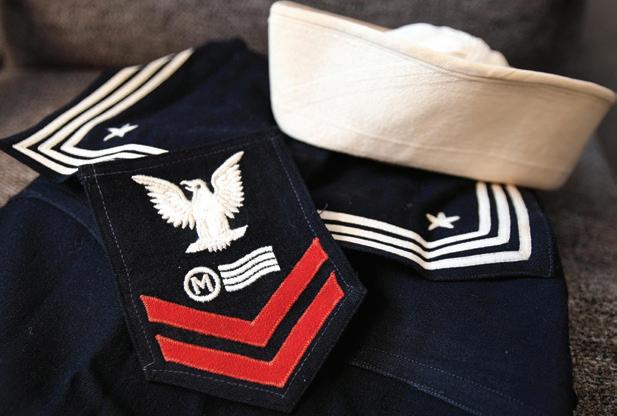
“I knew my great grandfather was in World War II, but he never went into detail, and I never asked to talk to him about it,” O’Brien said. He assumed Menk didn’t want to talk about it given how averse another relative was about discussing his time in the Vietnam War.
The topic remained basically untouched until Ward’s class project. From the start, O’Brien had an instant ally in his mom, Tami, who visited Menk regularly. Sam gave her questions to ask, and she reported the details back to him for the project.
Through a series of interviews, O’Brien learned that Menk enlisted at 17 and trained in Idaho for five to eight weeks, where he was taught to shoot and load cannons. After being sent to San Diego, he boarded the aircraft carrier USS Kula Gulf, working in the kitchen and sailing to Guam and Saipan. “They were an escort for convoys, so when the fighting was going on between Guam and Saipan at that time, they were moving supplies back and forth,” Ward said.

Part of Menk’s time in the Navy involved cleanup at Pearl Harbor, two years after the Japanese bombing.
Midway through the course, Ward was pleased that the project was giving his students more of a personal stake in the historic era.
“As we keep talking about things, the students keep chiming in, going, ‘My grandma was here,’ ‘My great grandpa was there,’ ‘grandma was doing this,’ … instead of me just lecturing,” Ward said. “For example, there was the battle of Kula Gulf, so when I start talking about the Battle of New Georgia, Sam can go, OK I’ve got that connection.”
What they learned from Menk also filled in a lot of family history.
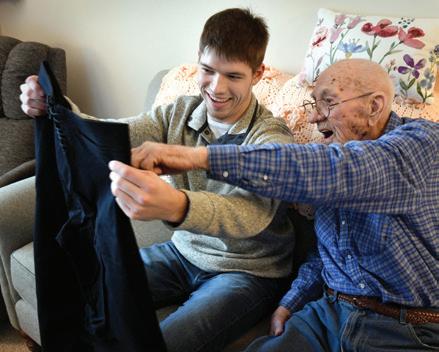
“It was crazy to find out this much about your family and find out what they went through,” O’Brien said. “It’s nuts to learn so much about something I’m interested in.”
 Sam O’Brien visiting with his great grandfather Jim Menk.
Sam O’Brien visiting with his great grandfather Jim Menk.
"There were good guys and there were bad guys, period. Since then we don't look at wars that way as much as we used to."
— History professor Kyle Ward
O’Brien said his grandfather was eager to enlist as a response to Japan’s attack on Pearl Harbor on Dec. 7, 1941. Asked if his own generation would today rally as cohesively as they did in 1941 and throughout WWII, O’Brien said he doubts it. Interest in world events, he said, is too scattered.
“Everyone’s on their phones and all that, I don’t think everyone would have interest," he said.
Yes, there are people who’d go out and do it. But there’s a lot of people I know who wouldn’t.”
Ward said he makes it clear to students that WWII was viewed at the time as simply good versus evil.
“There were good guys and there were bad guys, period,” Ward said. “Since then, we don’t look at wars that way as much as we used to.”
O’Brien said that his great grandfather had a brother who served in the Army and was involved in the D-Day invasion of Europe. That experience and what he saw there haunted him long afterward, and he took his own life after returning home.
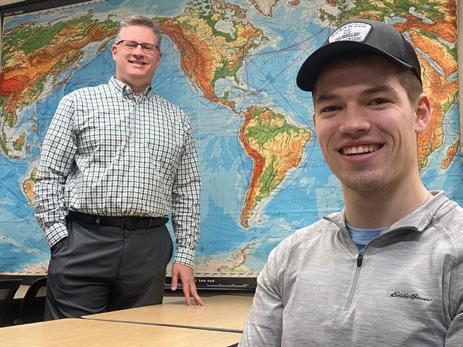
That may have been what prompted Menk’s advice to O’Brien when it came to war.
“He said ‘Stay the hell out of it,’” O’Brien said.
A 97-year-old veteran cracks wise with his great-grandson.
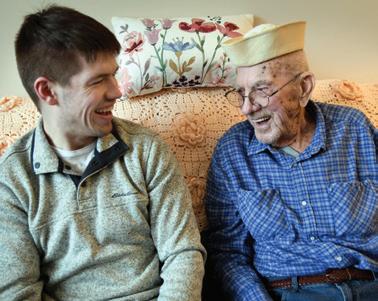
Jim Menk is letting his wife Ermalee sleep while he sits for a photo session at their little apartment in a Mankato assisted-living facility. Walking slowly with the help of a wheeled walker, he’s asked by his granddaughter Tami O’Brien where he wants to sit. “Next to Sam,” he says. He’s led to the couch next to her son, Minnesota State Mankato student Sam O’Brien.
As the history student and the history participant take a look at the well-preserved uniform, sailor’s cap and other World War II mementos, Menk admits his memory is fading on specifics. But there remain many things he recalls vividly.
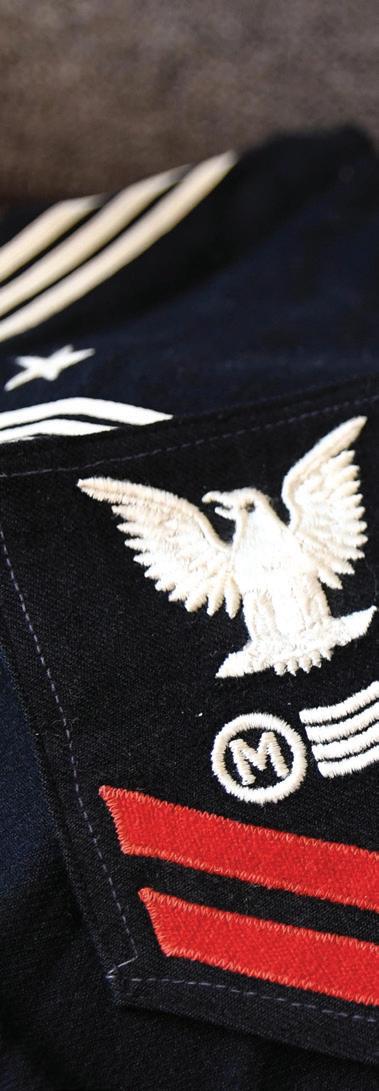
On his enthusiasm to join:
“I was eager to get in. After a while, I wasn’t so damn eager.”
The food on the USS Kula Gulf:
“They used to feed us this cooked rice, flat rice, on board the ship. They served that or potatoes. And you put gravy over it.”
Hearing the war ended:
“I was in the Pacific. We were on our way to France … but we never had to go all the way. How did it feel? It felt pretty damn good.”
On Ermalee, the hometown girl he asked to marry him after the war:
“I say I looked for a girl and never found one; I joined the Navy and went halfway around the world and came home and married the girl next door.”
The two have been married for 75 years.
 By Joe Tougas ’86
By Joe Tougas ’86
Laura Strunk is getting her first look at an isolated, two-story house that’s been constructed specifically for social work students.

“The main structure of this is really cool,” Strunk says. “We just need for it to look way worse.”
She’s talking to Paul Cusick, the IT Solutions staff member providing the tour. The two are in a small conference room in the Clinical Sciences Building, Strunk on a chair watching a video monitor, and Cusick standing up wearing virtual reality goggles, walking through the house while everything he sees is reflected on the monitor. Working with funds provided by the College of Allied Health and Nursing, Strunk and Cusick are editing a virtual reality experience designed to immerse social work students in a home loaded with signals that something bad is happening within its walls.
VR was used by nursing students during the pandemic, a time when physical medical simulations were difficult to arrange. A few other programs also started using VR, including athletic training and sport management.
Social Work, Cusick said, was initially interested in a physical structure or lab of sorts to simulate a dangerous or, in social work parlance, dirty house.
“I’m like: so, you’re telling me, in this brand new [Clinical Sciences] building that we just built five years ago, that you want to destroy one of these rooms and make it smell like a house that hasn’t been touched for the past 20
years?” Cusick says. “Maybe that’s a good one for VR.” Cusick approached the firm that designs the VR programs and asked if a dirty house could be built and customized with several features—or “assets”—ranging from dog waste to dirty countertops to overflowing, broken garbage bags.
“The whole VR world is starting to get to the point where it’s drag-and-drop assets,” he said. “I can go to a place and say I need a bathtub, I need a dirty sink, I need a countertop or cabinet set and they can just drag those into prebuilt environments.”
Just as in theater, set design is only there to serve the story. And it is Strunk’s job to make sure the space tells a story that students will need to recognize.
“We’ll have different scenarios depending on what it is that we’re looking for,” she said. “It could be there’s an elderly person living there for whom there’s been a report that they’re not able to live there safely. Could be a child protection report where there’s neglect and abuse happening.”
As they take the tour for the first time, Strunk is in the strange position of complimenting some disgusting things and even requesting there be more. Cusick takes notes to share with the developers for changes and improvements.
“When you go into houses like this, bathrooms are usually pretty disgusting,” she said, requesting the addition of assets unfit for polite conversation. The stairs are in too
good a condition, as well, she notes. “There should be missing railings, loose boards. A hole in one of the stairs. Maybe a huge chunk of the railing gone.” The tour hits both floors as well as the outdoor porch and unkempt lawn, and Strunk has plenty of suggestions to make things bleaker.
When fully approved, the VR simulations will be available to senior social work students before they start their practicums.
It’s challenging to give students seeking bachelor’s degrees real-life experiences with clients until they are in their final semester and in a practicum setting, Strunk says.
“The VR simulations will be used to create learning environments for students that are very similar to real-life scenarios.”
In addition to identifying immediate dangers in the scenario, students may also get the chance to improve their skills at observation, critical thinking, problem-solving, assessing for personal safety and the safety of others, and crisis intervention, Strunk says. Cusick said VR is an ideal—and innovative—format for social work studies.
“Nobody has this,” Cusick says. “Even the company that’s building this said there’s never been a social work application of it.”
In a program starting this fall, social work students will walk through a virtualreality home containing evidence of neglect, abuse and other problems.

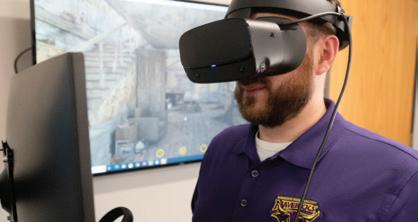
 Social work professor Laura Strunk and IT architect Paul Cusick worked to design the VR program.
IT Solutions Center senior analyst Jordan Foix takes the VR walk-through.
Social work professor Laura Strunk and IT architect Paul Cusick worked to design the VR program.
IT Solutions Center senior analyst Jordan Foix takes the VR walk-through.

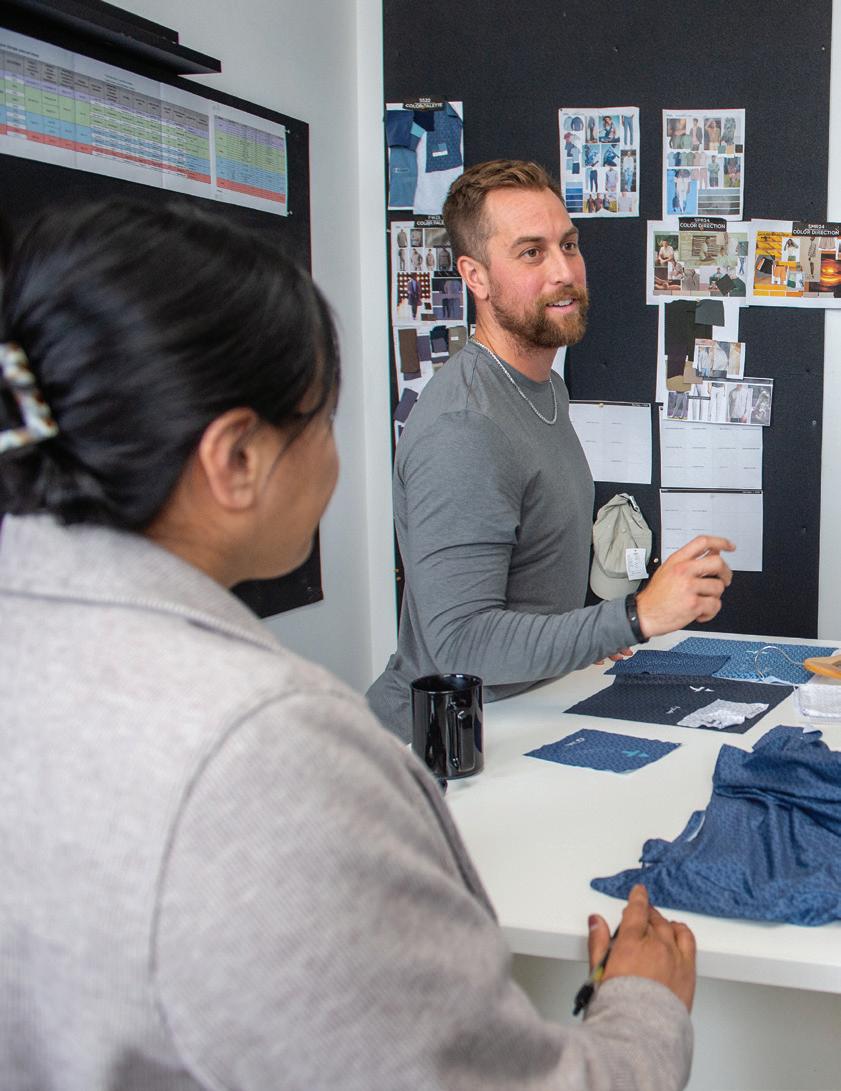
 By Joe Tougas ’86
By Joe Tougas ’86
On one hand, it was likely their careers would merge somehow: Same school, same sense of starting at the bottom and the same surprise success.
What made it inevitable that Adam Thielen ’13 and Michael Jordan ’16 would join forces, however, is their common desire to share in their fortunes.

The result is a line of Thielen sports clothing created by Jordan’s St. Paulbased UNRL clothing company.
Thielen, the Maverick wide receiver who ascended to the ranks of NFL star, and sports clothier Jordan both started their paths at Minnesota State Mankato. Jordan began his clothing business while still in school; UNRL now has sales figures in the millions. Thielen’s football career began with the Mavericks, which led to nine celebrated seasons with the Minnesota Vikings. This year, he signed with the Carolina Panthers for a three-year, $25 million contract.
“Mankato is the reason why I’m where I’m at,” Thielen said. “A lot of the guys in the locker room, they’re not from Division II schools or small schools; when I talk about how much I loved it there and how I wouldn’t change anything they’re kind of shocked. But it is such a great place. What a great community that gets behind what you’re doing.”
What the two of them are doing now is creating a line of clothing to support the foundation Thielen created five years ago.
Thielen and his wife Caitlin ’14 founded The Thielen Foundation to help disadvantaged youth.
“That’s our main focus: Helping youth reach their full potential,” Thielen said of the Foundation. “We made that mission statement very broad so we could impact in a lot of different areas. And then from there we’ve found our way as to how to best use our resources in time. Now it’s shifted to more of helping youth reach their full potential through sport.”
With a sports emphasis, the Foundation provides kids with equipment, uniforms and other resources that enhance their playtime and social skills.
“We started the foundation and needed apparel for that,” Thielen said. “It made sense [to partner with UNRL] from that perspective, but then when you see the quality and the company he’s building, you want him to do more. From an athlete’s perspective, it was nice to have a clothing brand that really fits your lifestyle."
And, of course, their similar trajectories.
“It just made sense, both being from Minnesota State Mankato,” said Thielen. “[Jordan’s] start to get into the ap-
parel business, compared to my start getting into the NFL— starting from the bottom and working our way up and putting a product out there, whether it be on the field or in his case, this kind of apparel. Something you could be proud of and that other people could be proud of to represent.”
Jordan had been a fan of Thielen’s long before they met, impressed with the Foundation’s work and how it matched his own goals of giving back to the community.
“I remember getting on the phone with Adam for the first time and talking that through and hearing his excitement about wanting to do something. I was shocked that we were on his radar and he was excited about it at that time. Because we were really a small fish in the sea. We still are, compared to an Adidas or a Nike. So that was exciting.”
Jordan, similarly, wants to align his work with good causes. His ambition is to eventually see sales grow into the hundreds of millions, all while contributing to charitable organizations.
“We’re not looking always for athletes and what they do on the field,” Jordan said. “It’s a lot of what they’re doing off the field, and that’s what draws us to Adam. We’re always looking for people striving to use their platform to do some good in the community and really incorporate philanthropy into what they’re doing. … It doesn’t hurt that he’s also a savvy businessman who’s able to come up with really awesome ideas for us.”
The Adam Thielen line includes hoodies, quarter-zip shirts, sweatpants, short-sleeve sweatshirts and golf attire for on and off the course. (“I think Adam’s a golfer who makes his dough on the football field,” Jordan said.) It’s important to both men that the items are those that Thielen would actually wear.
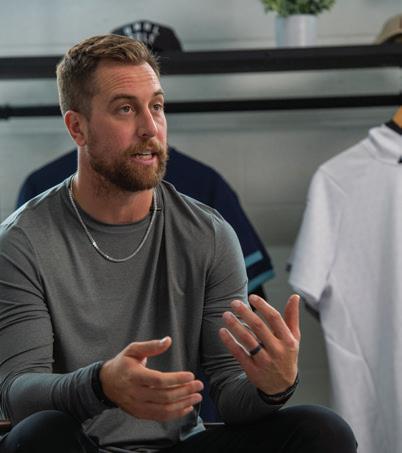
“I’m a big believer that I don’t rep stuff that I don’t wear or that I don’t use,” Thielen said. “So it’s all things that I wear on a daily basis. I wear sweatpants and a hoodie to my work every single day… And I’m a huge golfer. I’m on the golf course when I have free time. That mix of athletic wear/golf wear is really fun.
In determining the overall look, they went for style and subtlety—not cartoonish caricatures of Thielen or exclamations like “I’m Thielen It.”
“Adam made it really clear at the beginning he wants stuff to be stuff that he’s going to wear,” Jordan said. “He’s probably not going to wear his face on a T-shirt. So we went a little more premium with it.”
“You've got to look good,” Thielen said. “I always try to bring a lot of swag to what I’m doing no matter what I’m doing—whether I’m on the golf course or at practice or in a game. UNRL allows you to do that in a different type of way. It’s like a classy swag, where you look clean-cut but there’s a little flair to it, a little swag along with that.”
“Being able to bring [UNRL items] to my teammates, especially now that I’m going to a different team … I’m excited for that.”
Adam Thielen
Jordan too said he feels the two are bonded by their underdog stories. In a world of Nikes, UNRL has relatively low visibility—for now.
“We do not have the funding that these big clothing brands have. I didn’t even go to fashion school. So you think of these competitors that we’re going against—it’s either the big Goliaths that have been there for a long time or it’s the VC firms that are backing with a ton of money and they hire all the best designers in the world and they start their brand. So for us to even get to where we’re at now is a similar path, a similar mountain to climb and I think that’s what brings us together.”
Thielen said he’s keen to show off the products to his fellow players and to spread the word and wares of the small Minnesota company with whom he’s doing business.
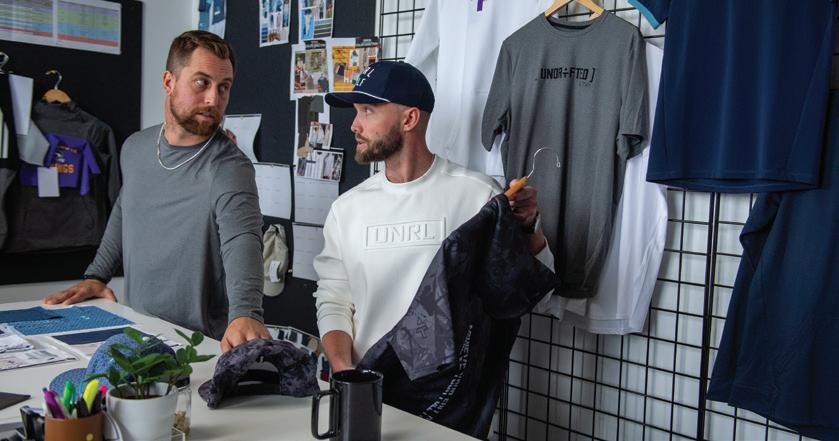
“Being able to bring it to my teammates, especially now that I’m going to a different team and in an area that probably doesn’t know a whole lot about UNRL and their products—I’m excited for that, I’m excited to bring that brand to them. And I think the guys are going to be super excited about it. Might have some Panther colors in there. That’s what excites me.”
“I’ve always definitely looked up to Adam, seeing just how much adversity he’s overcome to get where he is, nothing but the highest regards,” Jordan says. “Then, the added-on fact that the amount of time he puts in back in the community whether it’s investing his money or
time—which is arguably more of a precious asset—he doesn’t take it for granted for sure.”
That underdog story is a good one to share with kids who the Thielens reach through the foundation, Jordan adds.
“He came out of Detroit Lakes and went to Mankato— these are not the most publicized cities in the state,” Jordan said. “And Minnesota’s not the most publicized state in the NFL. He gives a good example of how to get there and can share that story and really inspire a lot of kids.”
There are two logos at play in the line, one being the AT logo that has an arrow involved and speaks to Thielen’s faith and sense of responsibility “with an up arrow pointing to God, who we feel has blessed us, given us an opportunity and platform to give back,” he said. “We always want to remember like, hey, that’s why we’re doing this. That was the inspiration behind the logo.”
Another logo is the word “undrafted,” which Jordan created based on the Thielen legend of not being drafted when he signed on with the NFL only to rise to become a giant in the league.
“I think it’s that mindset that the greats have of I feel like I’m undrafted,” Thielen said. “It kind of puts that chip on your shoulder that says ‘People doubt me and I’m going to prove them wrong. That’s kind of what that shirt embodies. When you wear that shirt, you’re saying ‘I got a chip on my shoulder because there’s a lot of people that don’t think I should be here right now.'”
“We’re not looking always for athletes and what they do on the field. It’s a lot of what they’re doing off the field, and that’s what draws us to Adam.”
Michael Jordan
Ben Divine enrolled in Minnesota State Mankato’s I/O program based on its reputation and director Dan Sachau.
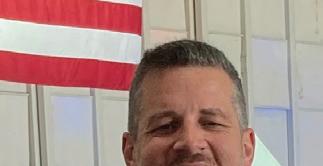

He couldn’t just stand there and say nothing. Not when he was this close to the man who held the job Ben Divine wanted someday. The man’s name was Michael Bourke, and he was the chief psychologist for the U.S. Marshals office in Washington D.C.
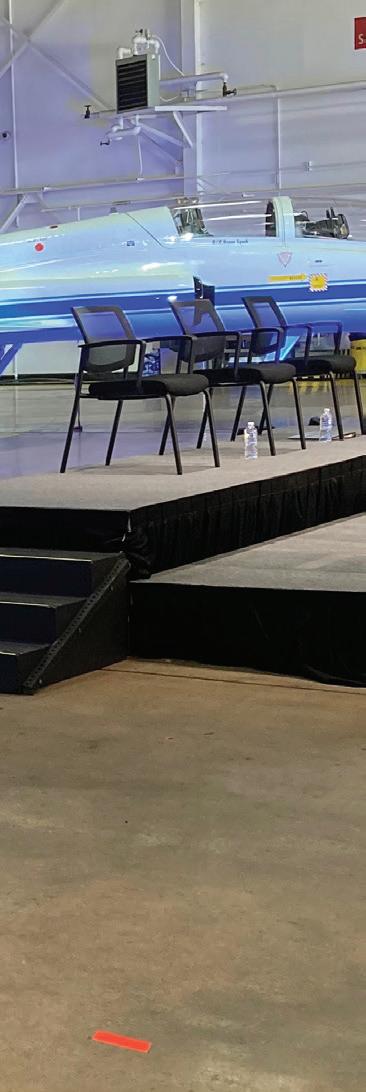
As a student in the Industrial/Organizational Psychology program at Minnesota State Mankato, Divine found himself in Bourke’s D.C. office on a visit organized by the program’s director, Dan Sachau. At the end of a meeting among the three, Bourke asked, "Do you have any other questions for me?”
“And I thought, I’ve got to ask this guy a question,” Divine recalled. “I mean, he's my idol, the coolest guy ever. I’ve got to ask this guy a question just so he knows I'm interested in being him one day. So I jokingly said, 'What do I have to do to replace you one day?’”
Divine hoped the lighthearted comment would be received as well-intentioned. A joke, even. What followed changed his life.
“He said, ‘You know what? Why don't you come shadow me for a summer?’” Divine recalled.
“And it was just like, done,” Divine said. “So I moved my wife and my 2-year-old daughter. We moved to D.C. for a summer. I shadowed him in the Behavioral Analysis Unit. It eventually turned into my thesis project, where we researched secondary traumatic stress among deputy U.S. Marshals. Then I worked as an external consultant for them for the next 10 years.”
Speaking from his home in Kansas City, Divine was tracing the major steps that got him to his current role as a person-
Ben Divine at NASA’s Mission Control. He develops tools to help NASA employers select ideal candidates.

nel psychologist with NASA. He’s been there for more than two years. His main work is in creating and establishing tools that help assess and evaluate candidates for jobs at NASA, from astronauts on down.
In the I/O (industrial/organizational) line of psychology, Divine primarily works on the I side, which is more at the technical end of things than the clinical. He helps design assessment tools to help NASA whittle a tremendously large applicant pool down to the best types of candidates. When a job post goes out for the astronaut program, tens of thousands of applications come in—many just to get an official rejection letter from NASA’s astronaut program.
“But on top of that we really have to have those first hurdles be specific, but not disqualify some of the people we’re really wanting,” Divine said. Some of those specifics are a master’s degree or higher in a STEM field such as engineering, biological science, computer science or aerospace, with two years related experience. Some ideal candidates have experience flying high performance jet aircraft. And they all have to be capable of passing a rigorous physical component.
“Especially when we’re looking to not just go to the moon, but Mars and beyond. Mars alone
could take 500-plus days round trip. We want to make sure that our astronauts are able to be in close confinement, work well with one another and have those [other] soft skills that are oftentimes very difficult to measure.”
From there the qualifications get more specific, more involved medically and psychologically. Astronaut panels weigh in and conduct interviews in an intense selection process.
Divine grew up in Utah and got his bachelor’s degree in psychology from the University of Utah, where he sought to learn more about the area of workplace psychology. Inspired by two years of mission work in the Philippines, he developed an interest in psychology that grew into a more focused interest in workplace psychology.
“I didn't really know about the I/O psychology field. It was not offered at the time there, but I started to hear about, you know, this idea of psychology applied to work. So I researched where some of those programs are and Minnesota State Mankato’s I/O program came up as one of the top-ranked master’s programs in the country.”
In the program, he quickly signed on with the applied research wing of I/O Psychology, the OERG research group, the program’s in-house consulting firm.
“So as students, we're working our tails off every day, but also have the chance on the side to get assigned these really cool consulting gigs with real customers and real issues to solve. And one of my assignments was to travel to Washington, D.C. with Dan to visit the U.S. Marshals Service within their Behavioral Analysis Unit.
“Dan was kind of talking about the different projects and what's out there. And he looked at me and said, hey, Ben, do you wanna' travel to D.C. and work with me on this Marshals project?”
Which, of course, launched a career that ultimately put Divine at NASA.
“Had I said no, I'm not sure we're talking right now," he said. “That was a pivotal moment for me.”
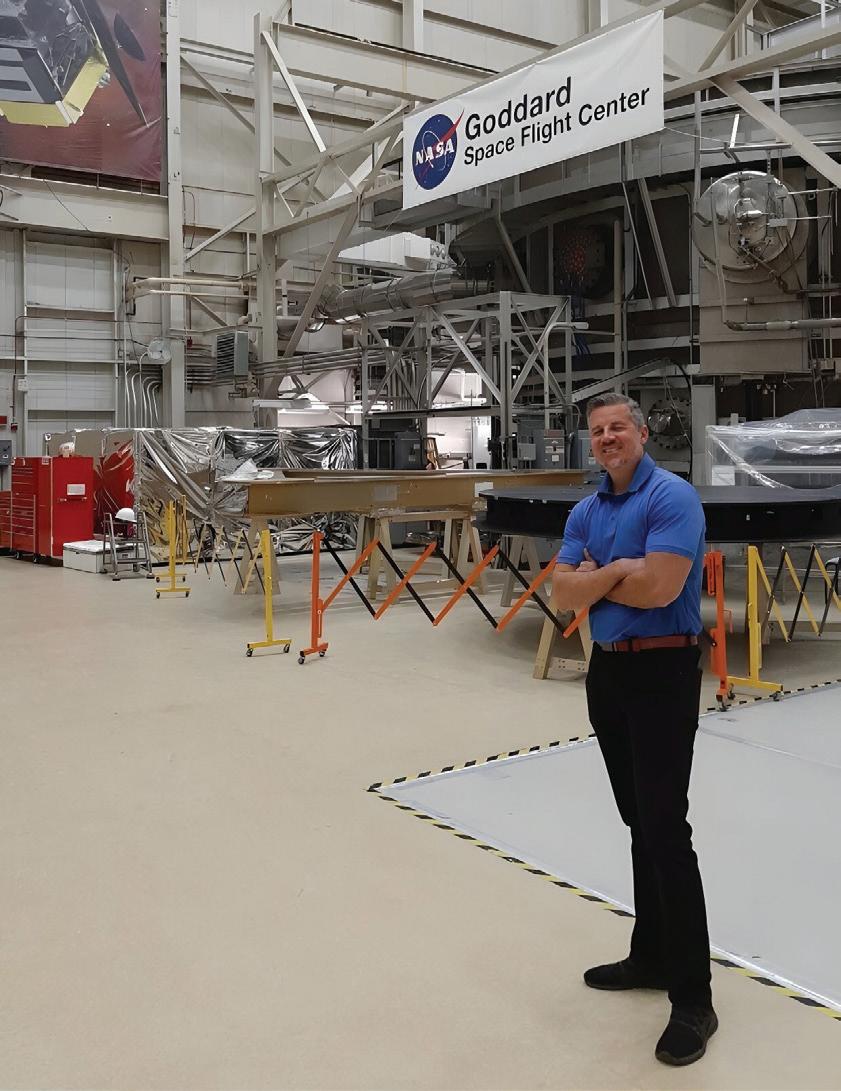

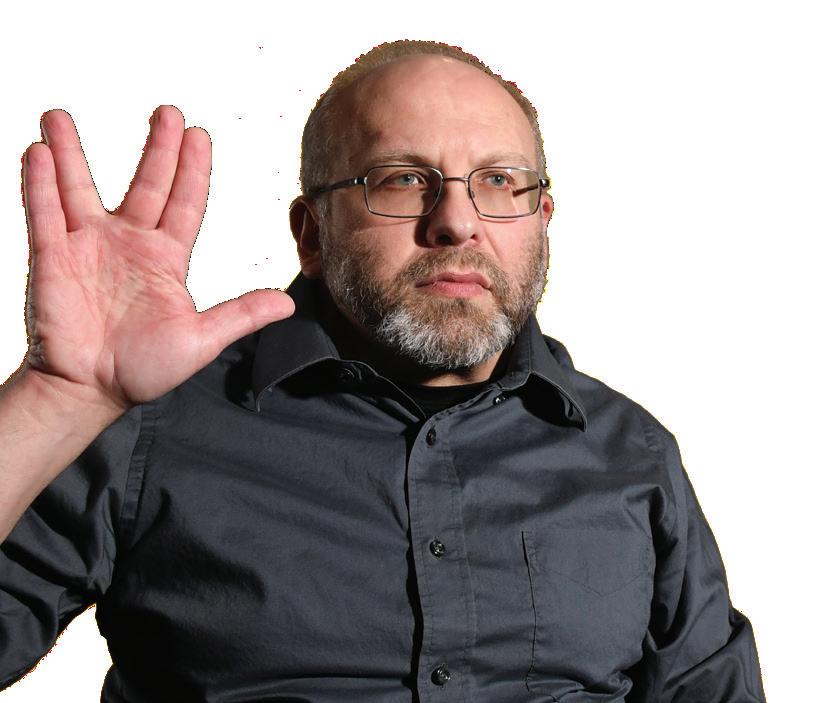
 Professor Andrew Kaufman, coauthor of a book on leadership lessons via Star Trek Captains
As a student, Aaron Peterson approached Kaufman about being an advisor. The two became friends and co-authors.
Professor Andrew Kaufman, coauthor of a book on leadership lessons via Star Trek Captains
As a student, Aaron Peterson approached Kaufman about being an advisor. The two became friends and co-authors.
Look, it’s a tough call, and there are good points to be made for many different camps. But here’s where Jason Kaufman and Aaron Peterson ultimately land in the debate over which “Star Trek” universe captain demonstrates the best leadership characteristics overall.
Peterson: Capt. Christopher Pike, the immediate predecessor to James T. Kirk as the captain of the starship USS Enterprise.
Kaufman: Capt. Jean-Luc Picard, who is most frequently the captain of the Federation starship USS Enterprise. (Although, Kaufman admits, Pike is a close second.)
Peterson and Kaufman have been drawing lessons in leadership from the “Star Trek” universe for years in their college and graduate school classes, and now they’ve co-authored a book, “Leadership in Star Trek: Lessons from the Captain’s Chair,” to be published by McFarland & Company. They contend these lessons in enlightened thinking and compassion in the service of others are useful in settings professional, governmental and academic.
“Over 60 years, more than 800 episodes and 13 films, here’s why we as fans, but more importantly as people and scholars, write about leadership in this universe,” said Kaufman, a Minnesota State Mankato professor of educational leadership. “The whole concept of ‘Star Trek’ at its core is based on core enlightenment ideals—that through reason grounded in human compassion we can individually, and as a species, think our way through any problem ethically together. You don’t have to be a ‘Trek’ fan to appreciate that.”

What both Kaufman and Peterson found especially interesting was that with the new series, “Star Trek: Strange New Worlds,” the leadership lessons have only become more rel-
evant as they’ve grown in multiculturalism and multi-gender representations, among other things.
“This is how the world ought to look,” Kaufman said. “This is how leadership ought to be taught.”
Peterson, a researcher who taught educational leadership at Minnesota State University Moorhead for three years, said his mother initially got him excited about “Star Trek” when he was a kid. Years later, when he was a doctoral student in one of Kaufman’s leadership classes, he felt like he was the only student understanding the “Star Trek” references.
“I went to him immediately and said, ‘I need you to be my advisor. Is that at all possible?’” Peterson said. “What blossomed from there, I wouldn't have imagined possible.”
Years of friendship later, their mutual scholarly interest and admiration for “Trek” made them the perfect writing partners for an academic article about leadership that ended up being published on the "Star Trek" website. It was read by an enormous fandom, which let them know they had enough interest for a book or two.
“What ‘Star Trek’ has always proven, regardless of the era it is, is that we can be more than what we are now. ‘Star Trek' has a way of pushing boundaries,” Peterson said.
“Leadership in Star Trek: Lessons from the Captain’s Chair” will be published within the next year. Kaufman and Peterson are currently working on a second, more advanced “Star Trek” leadership book focusing on humility in leadership.
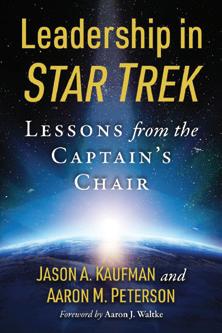
boldly go where no
‘14
The data science world at Minnesota State Mankato continues to grow. Taylor Corporation has taken notice.
By Robb Murray ’95In 2020, the North Mankato-based international printing giant Taylor Corporation started an internship program for students with a very particular set of skills.
Those skills involve data science and artificial intelligence. As the science behind data and AI races forward at a breakneck pace, forward-thinking companies are snapping up skilled graduates who not only know how to analyze data, but are also able to exploit its mysteries to maximize efficiency and profitability. Taylor is one of those companies, which is why it set up an internship program for students coming out of Minnesota State Mankato’s data sciences master’s program. So far, the program has funneled several students into internships at Taylor. Those internships often lead to good jobs; the industry standard salary for skilled data science jobs is roughly $120,000.
“The grads from that program are really quite excellent,” said Andrew Bittner, the president of the Business Unit and general manager of Taylor Data Analytics. “One of our top data scientists within our operational analytics team is a recent Minnesota State Mankato graduate and has quickly ascended the ranks here.”
The story of the data sciences master’s program is an intriguing one. Started in 2019 by professor Rajeev Bukralia of the University’s computer information science department, the program’s numbers have seen healthy growth in just a few years.

Just as impressive, though, is what is happening with the student group associated with the program called DREAM (Data Resources for Eager and Analytical Minds.)
Its membership has skyrocketed.
“It started with two students,” Bukralia said. “Within a semester, we hit 50 students. Another semester down the road, we were over 100 students in the club. Prior to COVID, in 2019, we had about 350 students. It was the largest academic club on campus, one of the largest clubs you can find anywhere in the country focused on AI and data science—not from UW-Madison, not from UC Berkeley, not from MIT, not from Stanford, not from University of Minnesota. It was here at Minnesota State Mankato.”
Taylor Corporation’s general manager of analytics speaking to a meeting of DREAM, the data science club on campus.

DREAM club members are treated to regular visits from industry leaders from such companies as Microsoft, SAS, United Health Group, General Mills, Federated Insurance, Google and, of course, Taylor Corp. Bittner visited a spring meeting and gave club members a look at Taylor data careers and opportunities.
Students, meanwhile, see DREAM as a way to satisfy their curiosity about the future of data science and meet people who can help them meet career goals.
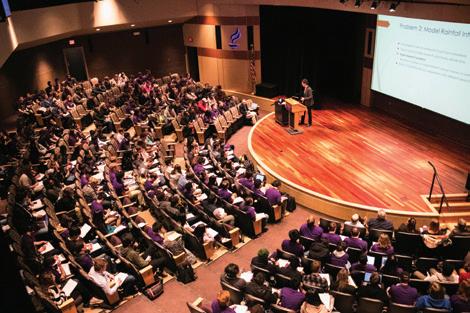
“It has given me the opportunity to make connections with industry professionals and develop my skills,” said Saumya
Guatam, who is a year away from completing the data science master’s program. “I have enhanced my leadership skills and gained technical skills outside of my classes by participating in various hackathons.”
Hackathons are competitions for students around the country. Teams converge on one location and are given a data problem to tackle. Minnesota State Mankato has hosted several hackathons, which give students experience solving the kind of complex problems data scientists deal with every day. They get 24 hours to solve them. During one hackathon hosted by the University, hundreds of students from dozens of universities analyzed data from the Minnesota Pollution Control Agency to address the effect of watersheds on the on the state’s water quality.
Abdul Wahab Abrar ‘21, who took part in DREAM and hackathons as a student, now works as a data scientist at the Star Tribune in Minneapolis. He analyzes the way readers use the company’s digital products, allowing the products to automatically tailor themselves to a user’s needs.
“The data science program's emphasis on real-world datasets and problem-solving, along with opportunities for internships, ensured I was job-ready upon graduation,” he said. “It was a comprehensive, practical and industry-relevant education that has served me well in my career.”
 By Drew Lyon ’06
The handball team is gaining members—and racking up championships.
By Drew Lyon ’06
The handball team is gaining members—and racking up championships.
Michael Wells, the volunteer coach of Minnesota State Mankato’s handball club, is overseeing a budding dynasty in the courts of Pennington Hall.
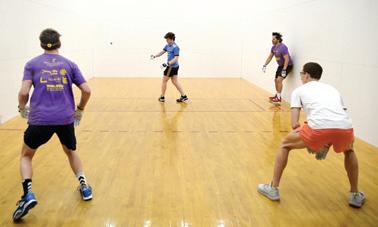
Yet, like many championship coaches before him, Wells defers credit. Handball, he’ll tell you, is a players’ game.
“It’s probably not right to say (our success) is due to coaching,” said Wells, who also teaches an introduction to handball course. “It’s like college football: ‘Jimmys and Joes’ beat ‘Xs and Os’.”
His players, however, are quick to clarify the impact of their genial head coach.
“Mike takes the time to make sure you’re doing this right,” student handballer Kate Holtmeier said. “He’s very good at recruiting. It’s crazy how many players he’s gotten to come here.”
Wells, a computer information science professor, has pride in his players—and for good reason. In 2022, the club claimed its first combined (men’s and women’s) national championship. In March 2023, the Mavericks men’s handballers defended their title, cementing the University’s status as a perennial powerhouse.
“Honestly, we’re the top handball school in the world at this point,” Wells said.
The handball community is noticing Mankato. During a recruiting trip in Ireland, Wells posed with a local who recognized his Maverick swag and rightly assumed he was affiliated with the handball team.
“We have an international reputation,” he said. “How cool is that? The team has gone places I never dreamed it would go, and they’re all good places.”
Mark Doyle, a handball prodigy from Ireland, is attending Minnesota State Mankato alongside several Irish players. At nationals, Doyle won the men’s doubles tournament with his roommate
Shane Dunne, a fellow Irish native and All-American. Doyle only deemed the tournament “somewhat successful” because he fell short in his bid to win the singles title, which Dunne won.
“In handball, you only have yourself to blame if you’re beaten,” Doyle said. “It’s on you.”
The Maverick women are on track toward a title. In 2023, the squad finished second at nationals for the second straight year. With several stars
returning, the Maverick women are poised to cross the final hurdle toward becoming national champs.
“Eventually, it won’t say ‘Runner-Up,’” assistant coach Carina Pace said during a practice, pointing to a team poster on the wall. “It’ll say ‘Champions.’”
It seems simple enough, whacking a ball with your hands against a wall while boxed in a small court. But don’t be fooled. Four-wall handball is essentially racquetball sans the racket; the niche sport requires athleticism, sharp hand-eye coordination and patience.

“Players make it look super easy,” Wells said, “but if you go and try and throw with your off hand, unless you’re a world-class athlete, you’re going to have a tough time when you start.”
To prove his point, Wells paused practice and dragged the reluctant TODAY reporter onto the court for a tutorial. Message received. Handball is a perfect cross-training workout, albeit one with a steep learning curve.
It’s also plenty of fun.
“I was really frustrated at first,” All-American Maddie Charbonneau said, “but I loved it.”
Wells formed the club in 2008, and assistant coach John Stoffel joined in 2010. Within a few years, the program won consecutive Division II titles before advancing to Division I, attracting out-of-state athletes to Mankato.
“Winning spreads the word,” Wells said.
Handball isn’t an official varsity sport, a distinction that suits Wells just fine. He’ll find a spot for any Maverick willing to strap on goggles and gloves and step into the court.
“We’ll take anyone that has a love for handball and is a nice person,” Wells said.
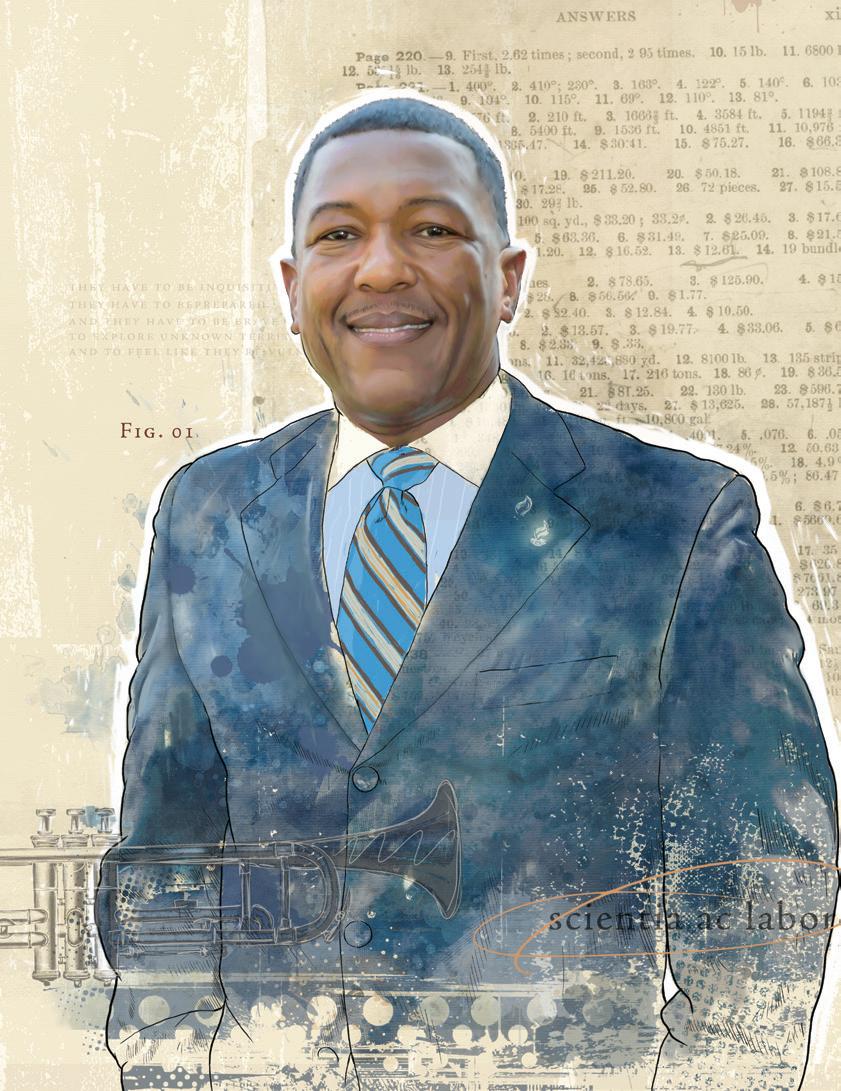
Students don’t care what you know until they know that you care.”
David Hood has carried and shared that point of view since his days as a middle-school history teacher in Alabama, his home state. It’s been a mantra of sorts across his career in education, including his term as associate provost at Montclair State University in New Jersey and, from there, his role as Minnesota State Mankato’s provost—his job since fall of 2022.
He grew up 45 miles west of Tuscaloosa, Ala., with a mother who worked at a bank and a father who worked multiple jobs.
“All he knew was work, work, work, work, work,” Hood said. “So, I got a lot of my work ethic from watching him … provide for our family,” Hood said. “I see myself as someone who is going to work harder and longer than any other person. I’m going to outwork you.”
Hood took up the trumpet as a child and showed some promise, enough to where a high school math teacher named Eddie Jaynes saw the potential and parted with a grand instrument.
Wanting to see Hood reach his potential, Jaynes sold Hood’s family a $2,500 Bach Stradivarius trumpet for $300. With that instrument in hand, Hood earned a full-ride music scholarship to Alabama A&M University. It was the type of gift and gesture that could sell a person on education as a calling.
“For me to have a teacher who didn’t give up on me and who actually went the extra mile to invest in me, that was the key that provided the foundation to get me to where I am today.”
That path evolved into eventually becoming a middle school teacher and administrator himself. From there, he took on some college administrator roles, coordinating the Masters of School Administration program at Elizabeth City State University in North Carolina and later associate provost at Montclair State University.
His higher ed career, he said, is devoted to shaping the academics experiences of the students, specifically those underserved populations.
It's one side of a bargain; the other side is for students to make optimal use of their moment in time, in education.
“No matter how amazing and how bright you are as a student—or if you struggle as a student—you have to have a work ethic that causes people to take note,” Hood said. “You have to always demonstrate that you’re willing to change and to grow and that you’re really dedicating yourself to this experience called ‘college.’”
Part of that student effort, he said, is engaging with faculty. “Challenge faculty members,” he said. “Drain them for every ounce of intellectual knowledge that they have. Demand it of them that they pour everything out into you.”
He has expectations of faculty, as well.
“They have to be prepared. They have to be inquisitive. And they have to be brave to explore unknown territories and to feel like they’re vulnerable,” Hood said. “Because when you become vulnerable, that’s when you have the most opportunity to actually create new knowledge and to learn.”
A year into the role, provost David Hood has expectations
For all his 34 years, Nick Allen was a happy, silly guy who—in his mother‘s words— “showed absolute unconditional love to everybody he met.”
“He was goofy and loved Disney, and everybody he met said that he just touched their souls,” said Nick’s mom, Wendy Allen.
Nick died in 2015 of complications from a rare genetic disorder called Coffin-Siris Syndrome, which causes developmental disabilities. When it became clear that the end was near, Wendy and her husband Sandy started calling everyone in Nick’s circle.

“As a credit to all the people who worked with him all those years, we called all the people we
knew from the past few years, and everybody came and had time with him privately, and we sang and said a prayer and watched him go to Heaven. There were probably 25 to 30 people there.”
There was one dear family friend who was absent because he lived across the country and had, in fact, never met Nick. Kyle Gorman had only followed Nick’s world on Facebook as Wendy posted stories and photos about his life—which makes what Gorman did recently even more incredible, Wendy said.
After getting to know Nick through the eyes of those who loved him and hearing the stories of his many caregivers at the funeral, Gorman
pledged $56,000 to Minnesota State Mankato toendow the Nicholas Allen Memorial Scholarship in the College of Allied Health and Nursing. The endowment makes it possible for the scholarship that Wendy and Sandy Allen had funded after Nick’s death to continue supporting nursing students who want to work with people with special needs in perpetuity.
In the formal Minnesota State Mankato Foundation agreement, Gorman wrote: “His caregivers, some from decades ago, showed up at the funeral to share their stories of Nick and how he changed their lives. They loved him so much that they would sleep on the hospital floor when he was hospitalized, both to be near him and to make sure that when he woke up he wouldn’t be alone. They told story after story of a physically and mentally challenged young man whose life should have been tragic but wasn’t. It was magic. The church was full— with people and with love and with community. There wasn’t a dry eye in the room. In his own way, against all odds, Nick changed the world.”
Gorman’s understanding of Nick’s legacy of love and empathy has meant much to Wendy and Sandy Allen. Wendy
grew up with Gorman in Mankato; Sandy met them both at Minnesota State Mankato. Gorman moved to Oregon in 1982 but the three have remained in touch, Wendy said.
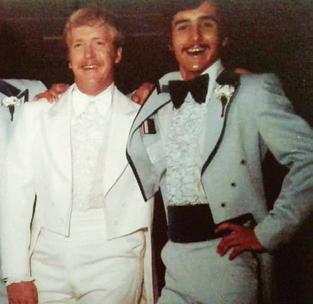
Wendy and Sandy established a scholarship in Nick’s name right after he died, and Gorman had been contributing annually. But earlier this year, it became apparent that the fund would soon be depleted, and the scholarship would cease.
“I finally asked (the Foundation) what would it take to just make this scholarship go on forever?” Gorman said. “And I just felt like I had to do it. … (The Allens) are an amazing, amazing couple. I know how to take care of people. But to think of having to take care of someone every day, with no vacation ever, and then to have it end where a parent loses a kid. That’s just not supposed to happen.”
It was important to the Allens to keep the scholarship going because Nick had impacted so many students during his lifetime, Wendy said. Nick had even been published in medical journals as the oldest living person with Coffin-Siris Syndrome.

He required 24-hour care at home, and he also frequently visited hospitals, clinics and university classrooms, which meant he taught hundreds of caregivers and students about working with people with disabilities, about his rare genetic disorder and about having an unflappable spirit during difficult times.
“Nick, with all of his disabilities and all of his challenges in life, we felt like he was here to teach,” Wendy said. “Kyle understands that. He is so amazing because it really shows that people care. There are good people in the world.”
Sandy Allen, in white, and Kyle Gorman at the Allens’ 1977 wedding.Makayla Jackson and Denisha Cartwright will enter the 2023-24 track season as national champions 10 times over.


Jackson, a runner and long-jumper, has six NCAA Division II national championship honors, and Cartwright, a runner and hurdler, has four. They both have nearly 20 All-American titles in track, and they’ve broken more school records than the track and field coaching staff can count.
The two undergraduate athletes aren’t shy about their desire to be on top, now and in the future. It’s what they’ve both shot for since exploding in their high school days— Cartwright in the Bahamas, Jackson in Milwaukee, Wisconsin. Both were regional stars in their teen years who met in 2021 as Maverick teammates.
Chris Parno, the associate head coach for men’s and women’s track and field, recruited both players, knowing he’d be getting some wildly fast talent. And he has noticed how their friendship has had a positive effect on their performance, the team and the reputation of the University.
“When you have two all-stars like that—and the rest of our group is very good as well—it elevates the group,” Parno said.
Their friendship is something to watch, he added, partic-
ularly when they’re competing for the same win.
“If Makayla has the weekend off from running the 60, Denisha will break the school record or something. And Makayla will break it back,” Parno said. "And then they’ll go back and forth with it. So it’s fun to see that dynamic.
“It’s certainly not a secret that when the gun goes off, they want to beat each other for sure, but I think it’s a healthy thing where both of them have elevated themselves because of that competition,” he added.
From the start, the pair clicked on and off the field.
“Well, we both want to be pro athletes, so that’s good,” Jackson said as the two of them sat together at a bagel shop on campus. “I feel like with both of us wanting to do that, we’re on the same mission.”
Jackson arrived at the University in 2020, the top sprinter at Rufus King High School in Milwaukee. She was the daughter of an athlete as well—her mother was a runner who excelled in short sprints.
“It was just in me, because I was around it growing up my whole entire life,” she said. Since her early teens, she’d had a singular mindset: Become the best.
“I developed a love for it. Since my mom couldn’t actually finish it out, I want to be the one to finish it out and become a really big track and field athlete.”
’86Recruited to run for the Mavericks in 2020, that goal only tightened her sophomore year when the team took nationals and she won at both the 60-meter run and the long jump.
“I’m like, I could go further with this. And I could just keep on.”
The next season, Cartwright joined the team. A native of the Bahamas who was a top distance runner in high school, she spent her first year of college at Ohio State, after which she was recruited by Minnesota State Mankato. In friendship and track, the two say they are in it for the long-term. One indicator of their closeness is how they approach upcoming track meets where the pressure’s on to win. There’s a familiarity to it that goes beyond the normal you-got-this mode.
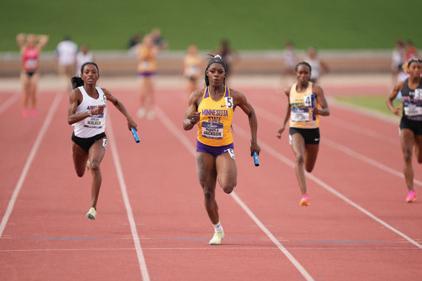
“We don’t really have to get on each other to say ‘Hey do this, do that,'” Cartwright said. “We already know what we’re coming in with. We’re ready to lock in, we’re already focused.”
That allows them to get honest with what’s ahead. For example, if a 400 relay is in their near future.
“We both will complain about it,” Jackson said. “We know we’re going to run to the best of our ability, so we just tell each other ‘OK, we’re going to run it. This is going to be the worst 53 to 55 seconds of our life, and after that we’re done.’
“Other than that,” she added, “we pretty much already know, soon as we hit the track. We’re there. Our mindset is there. We just say, let’s rock out on the track and go hard … When it comes to track we know how to lock in and focus, like this is the only thing that matters, everything else on the outside does not matter because we know, we don’t let it affect our performance.”
With national championships behind them and likely ahead, it’s safe to say their lives as student-athletes are unique—which draws them together as friends.
“There’s not a lot of people like us, really,” Cartwright said. “It’s good to have somebody up there with you who can understand.”
“We relate to each other in ways we probably don’t even know,” Jackson said.
Their conversations of late have to do with life after graduation and whether to take their “COVID year”— an extra season offered to college athletes who had to sit out the 2020 season because of the pandemic — or pursue the professional track options.
Parno is convinced the pair will continue competing after leaving Minnesota State Mankato. Jackson’s long jump will be her pathway, and Cartwright will have ample opportunities in the Bahamas, he said.
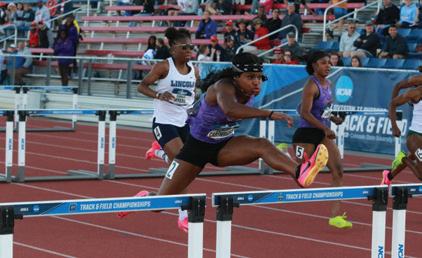
“It’s not common that you have two people who have had so much success—combined they have over 30 All-American awards,” Parno said. “And it’s not common you have a random fifth year. So it’ll be a lot of fun.”
In the meantime, you can find the two at the WOW Zone arcade or hanging out together, encouraging and learning from each other.
“I’m trying to learn more about the Bahamas and Denisha’s culture,” Jackson said. “I never grew up around people outside of the U.S., never met anybody outside of that, so with Denisha I’m always: ‘What did you say? Or ‘what does this mean’ because they have a different lingo than I do. She teaches me about her culture a lot because I’m intrigued to learn more about it.”
Cartwright agreed there’s a bit of a language—or slang— barrier. It may be the only instance in which they have to adjust their pace down.
“Sometimes,” Cartwright laughed, “my little slang will come out. She’ll ask, ‘What does that mean?’ And I’ll have to slow it down.”
Denisha Cartwright on the hurdles.Since Beth Fisher arrived at Minnesota State Mankato for the 2019-2020 academic year, she’s invested her research and expertise toward cutting-edge, climate-smart solutions in health and water quality.
“I see (my position) as an opportunity to pick the research that matters to solve the real-world problems,” said Fisher, a soil science professor in the geology department. “It’s exciting.”
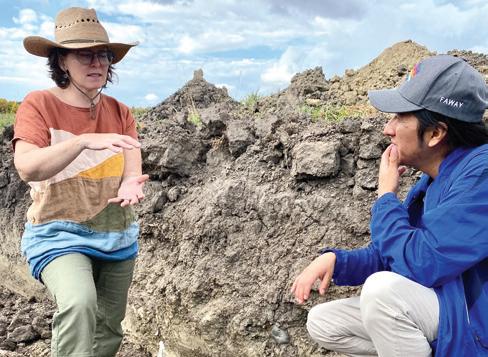
In 2022, Fisher was among the University faculty and students who joined three scientists from higher education institutions and agriculture organizations in a U.S. Department of Agriculture -sponsored grant supporting chicken farms that follow climate-smart grain production methods, which include using small grains (wheat, barley, oats, etc.), no-till (an agriculture application that reduces soil erosion) and cover crop practices. Chickens raised to graze (rather than remain in cages, as many are) interact with and can enrich the soil for plant growth.
“This project checks a lot of boxes and falls under climate change, food security, increasing biodiversity, water quality and Diversity, Equity and Inclusion,” Fisher said.
Minnesota State Mankato received $500,000 of the nearly $5 million USDA grant to conduct most of the soil analyses. A few years ago, while working on regenerative poultry practices with limited startup funding, Fisher and fellow scientists “pinky promised” to collaborate on a project studying longterm soil changes. General Mills stepped up and started supporting the project to promote regenerative agriculture—a set of farming practices and outcomes intended to improve topsoil and water quality and lower carbon dioxide.
“(Regenerative agriculture) infiltrates every part of the farming system,” Fisher said. “It affects the ecology—the soil and plants and how that works together—and it also impacts the lifestyle and the social conditions of the farmers.”
When the Biden administration released its Climate-Smart Commodities initiatives in 2022, Fisher and her team leaped at the chance to apply. The majority of the ongoing project’s research is centered around a Northfield farm run by Reginaldo Haslett-Marroquin, a Guatemalan agronomist who raises Tree-Range—not free range, Fisher clarified—chickens.
“He used his Guatemalan heritage and indigenous ways of thinking to think about, ‘OK, where is it that chickens are intended to exist on Earth?’” Fisher said. “Evolutionarily, their original place was in a jungle. … So how we do we bring a jungle to Minnesota? It’s a fun ecosystem way of thinking.”
Passing it on
At Minnesota State Mankato, the USDA grant is funding three undergraduate students who collaborate on measuring soil hydrology and density. Part of the students’ job in summer involved working with professor Chad Wittkop on measuring water samples following precipitation.
“Water’s an important component to catch the whole balance of the system—the elements and nutrients that are moving around,” Fisher said.
Fisher said she enjoys working with and mentoring undergrads.
“It’s a different pace and experience to have undergraduate researchers, and it’s also the place where I fell in love with science,” said Fisher, who added that she may hire a fourth student researcher. “That’s what I want to pass on to my students.”
One of her undergrad Maverick protégés is Kayla Szafraniec, who runs the lab’s elemental analyzer to measure carbon.
“I’m excited by how big of an impact this can have on the future of agriculture,” said Szafraniec, a senior geology major. “Research solves problems, and I’m grateful to have Beth as an adviser.”
Fisher and her team are preaching patience: The measurable responses of soil to regenerative practices take three to five years to see.
“I think students feel compelled by the bigger idea that this project has meaning beyond just these measurements that we’re making,” she said. “Being able to work on projects that have purpose and meaning larger than our work is the dream spot I’m grateful to find my way to as a faculty member.”
Two students outside Old Main, 1961
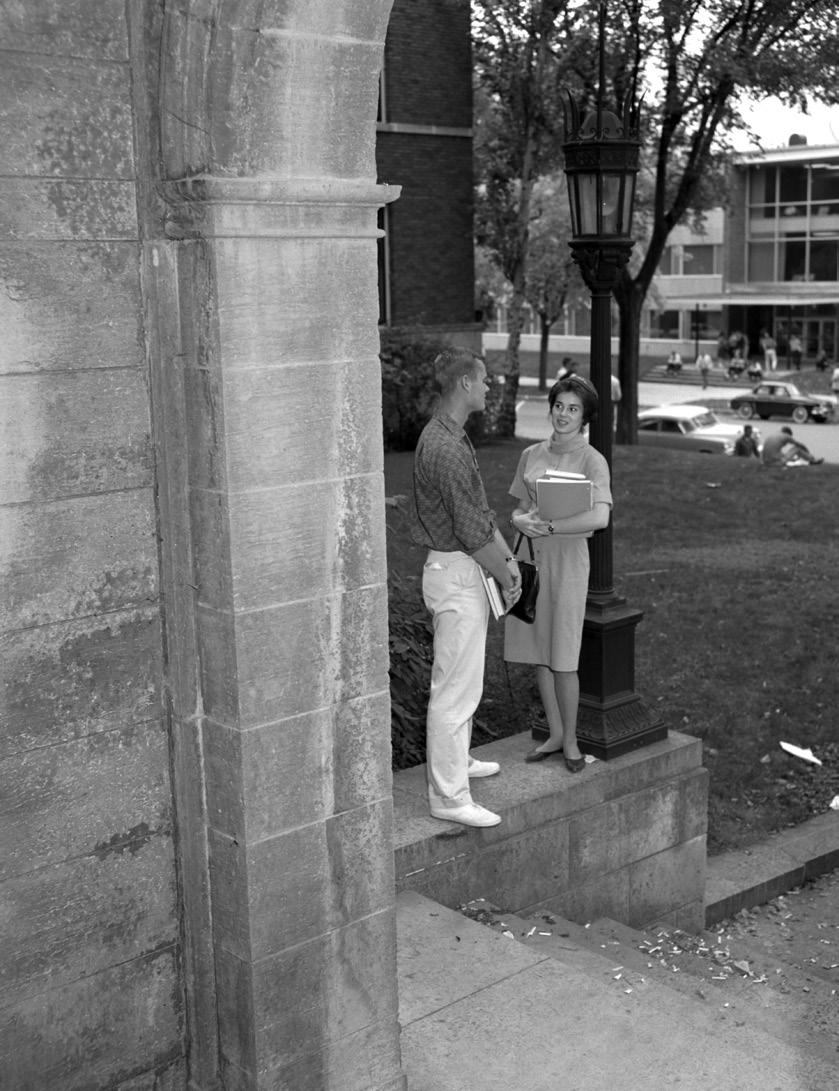
RITA (WENNER) AERTS, ’55, Hart, MI, plays the church piano weekly in her retirement. She had played clarinet in a band but quit when the pandemic began.
CHARLES ROESSLER, ’55, Mankato, MN, has been residing in senior living at Old Main Village with his wife, whom he met and had classes with in the very same building.
MARLY (JOHNSON) PARSA, ’56, Leawood, KS, is a retired teacher and registered nurse.
RONALD MACHACEK, ’56, Prior Lake, MN, is retired.
JOYCE (CUMMINS) OWENS, ’59, Phoenix, AZ, moved to Phoenix in 1968.
GEORGE DAVIS, ’60, Evansville, MN, is a retired high school principal.
IMOGENE (NELSON) SCHOFIELD, ’60, Carlsbad, CA, became a great-grandmother last spring and is retired.
FREDERICK KRUEGER, ’62, Ellensburg, WA, retired after 32 years of teaching high school. He also held a variety of positions with various universities, including teaching and research. Frederick received a Fulbright-Hays Grant to study in China and was selected to teach in Japan. His research work can be found at the Central Washington University Museum.
DENNIS LITFIN, ’64, ’68, Akeley, MN, retired after 32 years in public education where he held principal and teaching positions.
MICHAEL LESLIE, ’64, Hermitage, PA, was a Minnesota state probation and parole officer who later moved to Buffalo, NY, to take on a state parole officer position. He later became a regional director for Manhattan and the Bronx. He is retired.
ERNEST PARSONS, ’64, Rochester, MN, taught for 15 years before taking a position as a programmer/analyst at the Mayo Clinic, where he trained staff on computers and software.
MARGARET (MINAHAN) HABLE, ’68, Richmond, VA, is a retired educator who spent time in the Chesterfield County Schools and also Virginia Tech University.
JOHN ODOM, ’68, ’69, ’74, Austin, TX, has retired after holding a variety of positions including associate professor at Minnesota State University, Mankato.
KRISTENE (LANGLEY) WILSON , ’69, West Chester, OH, retired after 30 years of teaching.
ARTHUR ORTMAN, ’69, Boise, ID, retired after 30 years as a financial advisor with SagePoint Advisors. He earned five first-place awards and seven second-place awards in the Senior Games and National Senior Games.
ROBERT MURPHY, ’69, Cupertino, CA, recently retired from his semiconductor career in Silicon Valley. He was a co-founder of the start-up company Apex Lithography, which later became Compugraphics.

RONALD STRAWN, ’70, Roy, WA, is a retired attorney.
LYNNE BENSON, ’70, Farmington, MN, is enjoying quilting in her retirement. Prior to this she had held a variety of positions, and received her bachelor of arts degree in accounting.
COLLEEN (NELSEN) HAYES, ’71, Lakeville, MN, retired from the U.S. Army in 1990 and went on to receive her master’s degree from the University of Minnesota. She is a retired teacher.
JACK YOUNG, ’71, Iowa City, IA, is retired after being self-employed with Pamani Enterprises, State of Iowa.
JOSEPH ROCKERS, ’71, ’74, Minneapolis, MN, retired in 2019 after 48 years in education holding positions such as high school teacher, middle school assistant principal and university instructor.
ADELINE (MALECHA) RIHA, ’70, ’72, North Mankato, MN, retired after teaching in the Mankato Area Public Schools since 1972. She has spent a good amount of time volunteering at various places. She is a gardener and member of Portfolio Club.
MICHAEL MCGUIRE, ’73, ’79, Prior Lake, MN, is a retired city manager.
SANDRA (JOHNSON) THIBAULT, ’73, Savage, MN, is a self-employed therapeutic life coach.
CORRINE (MATASOVSKY) MUSKE, ’73, Spearfish, SD, retired after 40 years as a registered dietitian in hospitals and long-term care facilities. She also was an adjunct instructor in nutrition at a community college. She currently is volunteering at the Community Food Pantry where she serves on the board of directors.
JUDITH (SCHULTZ) PETERSON, ’73, Minnetonka, MN, started her own travel agency, Peterson Travel Pros, 10 years ago. She also has her realtor license and joined Coldwell Banker.
JUNE (STAGER) FARWICK, ’74, Aiken, SC, has been retired since 2015 and just bought her dream house.
GARY ERICKSEN, 75, Corpus Christi, TX, retired from the Minnesota Department of Transportation after working there for 30 years.
KEVIN MARK, HON., ’75, Red Wing, MN, was the chief judge of the First Judicial District who retired in February.
MICHAEL MAGNUSSON, ’76, Russell, KS, is the president and owner of Front Range Packaging, LLC who has two sons and six grandchildren.
STAN NELSON, ’76, Rancho Mission Viejo, CA, is retired and enjoying being a grandparent.
MARSHA (LINK) GOESCH, ’76, Montrose CO, is a retired elementary teacher.
MICHAEL LETRY, ’77, Double Oak, TX, is a retired senior total quality manager who enjoys working on and showing hobby cars.
CYRIL DENN, ’77, Mankato, MN, is divorced and retired.
CHERYL WIERSEMA, ’77, Estero, FL, is a retired social worker who spent 35 years working with child and adult protection services. She also worked at Sun Country Airlines.
DENNIS LAUTERBACH, ’77, West Des Moines, IA, retired as the vice president of finance with Lutheran Services in Iowa.
SHERRY (KOTTKE) LEWIS, ’77, Nicollet, MN, retired and is celebrating nine years of being cancer-free.
DEBORAH LIEN, ’78, Rochester, MN, recently was awarded the 2021 Distinguished Alumni Award by the University of Minnesota School of Dentistry Alumni Society. The award is for her outstanding contribution to dentistry and her service to the public.
DALE CARLTON, ’78, Maple Grove, MN, is a retired U.S. probation officer
THOMAS FORBES, ’79, ’81, Fort Dodge, IA, was an area supervisor for adult probation/parole before he retired.
CHRIS BEIHN ’79, Madison Lake, MN, retired after teaching middle school science for 30 years at Loyola Catholic School. He spent many years coaching a variety of sports.

RONALD LINDBERG, ’80, Fairmont, MN, retired in 2013 from his position as director of human resources at Lifetouch Medtronic, Electro-Craft.
MARVIN SCHUMACHER, ’80, ’82, Murfreesboro, TN, is a retired Lieutenant Colonal, U.S. Army Reserve
JAMES WENDORFF, ’82, Rochester, MN, is the vice president of human resources with Viracon.
SANDY (POLLOCK) BREUER, ’82, Apple Valley, MN, retired after nearly 41 years in the parks and recreation profession. She was the parks director for Washington County at the time of her retirement.
LORI HENRY, ’82, New Brighton, MN, received the Minnesota and National Family and Consumer Sciences Association Teacher of the Year in 2021. She retired in 2022.
DIANE (NICKEL) DUBEJ, ’85, Baxter, MN, started a new business and promotes a healthy way of living through Market America Shop.com.
KIMBERLY BODE-WODA, ’87, Corcoran, MN, is the executive vice president of sales with Masterson Staffing Solutions.
LAURA JORGENSEN, ’87, Hutchinson, MN, is living in Hutchinson, MN.
LEANNE ANDERSON, ’89, La Crosse, WI, recently joined Bellin and Gundersen as the chief people officer. She brings her experience from other varied human resources positions.
MICHAEL RITTER, ’91, Charlevoix, MI, is the superintendent of Charlevoix Public Schools.
CURT PRIBNOW, ’91, ’98, Brainerd, MN, is a retired police officer who has worked for the cities of Mankato and North Mankato. Currently, he is a criminal justice instructor at Central Lakes College.
SUSAN (MANSFIELD) WHITFIELD, ’91, Canton, GA, is the director of process development at Beaver Toyota in Cumming, GA.
SHELLEY (DERSNAH) MOMRELLI, ’91, Boca Raton, FL, is an interior designer with Morelli Group Inc. She and husband have three sons and enjoy traveling.
KRIS BIGALK, ’92, ’09, Minneapolis, MN, along with MATT MAUCH, ’98, Minneapolis, MN, recently took the helm of Trio House, a literary press, and relocated it to Minnesota. Trio Press also offers free educational materials for teaching poetry and provides instructional internships for college students.
DANAE (BLANCK) ANDERSON, ’95, Brainerd, Mn, is an interior design consultant with I.D. Your World where she works with residential and commercial projects. She also has written a number of trade-related articles for various publications.
THEO BLACK, ’96, Madison Lake, MN, along with his wife, moved back to the Mankato area after 25 years of living in the Minnetonka/Wayzata area. He is retired.
JAMES JAMNICK, ’98, Spring Hill, FL, is a high school math teacher in the Hernando County Schools.
JENNIFER RUTH GUYER-WOOD, ’95, ’98, Mendota Heights, MN, is the executive director of career exploration at Macalester College.
JASON SCHULTZ, ’95, Lakeville, MN, is a controller with G. M. Northrup Corporation whose daughter just graduated from Minnesota State University, Mankato.
TRICIA (SJOBERG) ADAMS, ’96, Emmetsburg, IA, is a human resources manager.
RACHAEL HANEL, ’97, ’04, Madison Lake, MN, is an associate professor at Minnesota State University, Mankato who recently published her second book, “Not the Camilla We Knew.”
KIMBERLY PENNING, ’98, 06, ’16, Owatonna, MN, is a high school science teacher who has been in the Owatonna Public Schools for six years. She and her husband have a teenage daughter.
BARBARA (LOWE) WENDT, ’00, Wabasso, MN, has been a science teacher for 20 years with the Marshall School District. She received her Master of Science degree in biology.
JEFFREY ENGBERG, ’02, Grand Island, NE, is a firefighter/ paramedic with the Grand Island Fire Department who recently became a grandfather.
MOLLY (RICHERT) SCHUNEMAN, ’03, Coon Rapids, MN, has worked for many commercial real estate firms and currently is the director of joint venture accounting at Link Logistics.
AMANDA WIRIG, ’03, ’15, Minneapolis, MN, recently moved to Minneapolis and has started her own art gallery. She also is in an Indie-Pop band.
KATHRYN LINDIN, ’03, ’21, Morristown, MN, is teaching preschool in Waseca Community Education.
RYAN VAN OVERBEKE, ’05, Excelsior, MN, recently was named chief commercial officer with XP Health. He brings with him nearly 20 years of experience in the field.
ERIN (JASKULKE) GONZALEZ, ’06, North Mankato, MN, completed certifications as an eating disorder specialist and intuitive eating counselor, she was a TEDxMNSU presenter.
JACOB SPOTT, ’07, Trussville, AL, is a Master PGA Professional and the director of golf at Hoover Country Club.
KIM (VAHRENKAMP) EGAN, ’08, Denver, CO, is an oncology social worker with Presbyterian/St. Luke’s Medical Center in Denver, CO, where she lives with her husband, Jeff.
ANDREANNE (THIBAULT) LORTIE, ’08, Plantagenet, ON, is a physical education teacher who coaches her two sons in hockey and plans to coach her daughter in the sport when she’s old enough.
CARLY (VOXLAND) BERGERSON, ’09, ’11, Eagan, MN, is the lead speech language pathologist with the Farmington Area Public Schools. She and her husband have three children.
HANNAH LEA (BECKIUS) JERABEK, ’09, Glencoe, MN, is a case manager, jail social worker, LSW with McLeod County.
KATIE (BERG) YOUNG, ’09, Austin, MN, is the community outreach and education coordinator with The Hormel Institute. Before that, she taught for 11 years.
LISA (CHAPLIN) WISE, ’09, Elizabethtown, KY, is the CEO of Communicare, a private, non-profit community mental health center.
SUSAN (FOHRENKAMM) UNDERWOOD, ’10, St. Paul, MN, is a human resources coordinator with Esch Construction Supply, Inc.
DENISE (CHEEK) NGUYEN, ’10, Long Beach, CA, is UI/UX Designer with Grand Canyon Education in Long Beach CA.
BRI (JENNISSEN) MORBITZER, ’11, ’14, St. Paul, MN, is a speech language pathologist who owns Superior Speech Therapy. She also hosts a social group for adults who stutter via Zoom.
CORTNEE DEPOPPE, ’11, Le Sueur, MN, is a teacher, mentor and graduate school instructor who has received several awards.
ROBERT JOHNSON, ’11, Pleasant Grove, UT, is a product designer.
DAVID HEINE, ’11, Norwood Young America, MN, received his CFP certification and is a financial planner with SLS, Inc.
CRYSTAL MELSHA, ’12, Chaska, MN, is an education specialist with Rogers Behavioral Health.
KEITH PETERSON, ’13, Walker, MN, is a county agency social worker with Cass County.
ABBY (SONNER) WOODSIDE, ’13, Johnston, IA, taught English Language Learning at the elementary level for six years before deciding to stay home with her two young children.
COLE KUKOWSMI, ’13, Aberdeen SD, is a financial planner with Edward Jones. He and his wife welcomed their baby boy this spring.
SAR (OLSON) FOX, ’13, Hanover, MN, is a speech language pathologist and certified lactation consultant at SunnyDays Therapy where many Minnesota State University, Mankato graduates also work.
MATTHEW JOB, ’14, North Mankato, MN, is a senior software developer with FUN.com. His wife, NICOLE (THEOBALD) JOB, ’17, is a product developer with FUN.com.
SHYNA GILL, ’14, Corvallis, OR, is the curriculum quality assurance manager for Stride, Inc.
YOONJOUNG (SHIN) SUTER, ’14, Savage, MN, is a Data Engineer II with Amazon.
AMBER (HANKS) ALLEN, ’14, Wells, MN, lives in Wells, MN.
TYLOR SCHWAR, ’15, ’21, Farmington, MN, is a distribution system operation with Dakota Electric Association. He has a two-year-old daughter and another child on the way.
KOLE DUDLEY, ’15, Queen Creek, AZ, is a business operations supervisor with Actalent Service in Tempe, AZ. He and his wife recently welcomed their daughter, Baker, into the world.
VICTORIA VAN DE VEIRE, ’16, Waconia, MN, is a greeter, host, pub runner with Buffalo Wild Wings and Chanhassen Dinner Theater who is enjoying time with her parents in Mazatlan.
BLAKE ALTENHOFEN, ’16, Spencer, IA, was a cardiovascular intensive care nurse for five years, who is now attending a doctoral program to become a certified registered nurse anesthetist.
KELLY BARNARD, ’17, Trabuco Canyon, CA, recently relocated to California where she was promoted to strategic account manager- gastroenterology and hepatopancreatobiliary with Medtronic in Orange County, CA.
JORDAN TAYLOR, ’18, Vancouver, WA, is a sales representative with Sherwin-Williams.
HANNAH SIEBERG, ’18, Bemidji, MN, currently is the food donor relationship manager with the North Country Food Bank.
WILLIAM HART, ’18, Chandler, AZ, recently had his first book, “Elephants Are Not Artists,” released. It was published by Lawley Publishing.
ALEXANDER CAREW, ’18, Corvallis, OR, is the assistant AD compliance and student services at the University of Portland.
BREANNA JECK, ’18, Apple Valley, MN, is a human resources consultant with Marco Technologies in Minnetonka, MN.
ALYSSA CARVER, ’18, Rapid City, SD, recently was promoted to head bookkeeper at Hart Ranch Camping Resort after completing her MBA.
JESSICA LANSTEINER, ’18, Mankato, MN, is a store manager at The Music Mart and the Mankato Symphony Stage Manager, a librarian and professional musician.
JULIAN JONES, ’19, Lincoln, NE, recently was promoted to telecommunications engineer II.
CLAIRE HAGSTROM, ’20, Fairmont, Mn, is a 4th grade teacher.
KATIE LABELLE, ’20, Mankato, MN, is a financial services specialist with Minnesota State University, Mankato. She and WYATT SLUNECKA, ’21, an operational specialist with Ag Management Solutions, recently were engaged.
HIEDI LAMBRECHT, ’21, Tyler, MN, is in her second year of teaching and is the band director at Edgerton Public School.
NICOLE (STALCAR) KOESTLER, ’21, Richfield, MN is a youth recreation program manager with the Minnetonka School District. Her husband, ZACHARY KOESTLER, ’00, is a preschool teacher with the St. Paul Public Schools.
JAKOB ERICKSON-THOEMKE, ’21, St. Cloud, MN, is a preschool teacher in the St. Cloud School District. He got his start as an ECSE paraeducator and then moved into the ESCW B-3 home visitor and on to where he is now.
PEYTON PRIMMER, ’22, Crystal, MN, is a patrol sergeant with the University of St. Thomas – Public Safety.
KENZIE BURDICK-LEVANG, ’22, Maple Grove, MN, is an educational support professional who is looking for a position teaching art.
TUONG VI LUU, ’23, Austin, MN, is a marketing project coordinator with Hormel Foods International who is hoping to pursue a career in international business.
SAPUMAL DARSHANA SALPADORU THUPPAHI, ’23, Bloomington, MN, is a software developer with Conklin Company, Inc. in Shakopee, MN.
SPENCER HEITKAMP, ’23, Janesville, MN, is an account executive with the Minnesota Lynx.
IDMAN IBRAHIM, ’23, St. Paul, MN, is attending graduate school.
1940s
Marie Anne (Gengler) Schnieder ’41
Lois Annette (Peterson) Johnson ’42
Betty Jean (Druckenbrod) Een ’43, ’67
Inez Lorraine (Stensrud) Kohls ’43
Doris Lorraine (Hegstad) Essman ’44
Viola Katherine (Becker) Suedbeck ’45
Willis Ashley Boynton ’48
Margaret Mary (O'Malley) Cochran ’48
Marcella Mae (Bartlett) Glamm ’48
Calla Cathryn (Albrecht) Higinbotham ’48
Kenneth Raymond Fechter ’49
Winnabeth Marie (Swartz) Neeck ’49
Robert John Reimler ’49
Eleanor Margaret (Kreitinger) Wittrock ’49
1950s
Virginia Ruth (Austin) Addleman ’50
Eleanor Maxine (Crozier) Jacobson ’50
Shirley Jane (Hessing) Pierce Brown ’50
Margaret Elizabeth (McGuire) Schulze ’50
Corrinne Ann (Suel) Turek ’50
Calvert George Belden ’51
Shirley Mae (Tebben) Bradford ’51, ’77
Carol Jean (Lynn) Broughten ’51, ’62
Donna Mae (Schultz) Crawford ’51
AL RE Curtis Leon Dornberg ’51, ’54
Patricia Ann (Heinis) Duthoy ’51
Norma Joyce (Creel) Johnson ’51
Mavis (Lund) King ’51
Harold E. Palmer ’51
Barbara Alice (Larson) Buecher ’52
Elizabeth Ann (Crone) Leland ’52
DeVon Wayne Linn ’52
Joyce Elaine (Lentz) Mittelsted ’52, ’70
Eilert Burton Pederson ’52
Charlotte Ann (Faulkner)
Roberts ’52, ’64
Joyce Elaine (Johnson) Snyder ’52
Barbara Carol (Schmidt) Deck ’53
Stanley John Kent ’53
Margaret Ann (Ackerman) LaVigne ’53
Jane Marie (Mach) Remes ’53
Jean Carol (Holldorf) Teeslink ’53, ’66
Velma Audrey Teichroew ’53
Dawn Ethel (Weller) Crosby ’54
Robert Eugene Downs ’54
Kay Ann (Ford) Gaasedelen ’54
Lucille Agnes (Fasnacht) Grothe ’54, ’61
Ramon Almich Oldenburg ’54
Margaret Jean (Knofczynski)
Roberts ’54, ’61
Judith Alice (Gudal) Backstrom ’55
Joseph Theodore Blindt ’55
Helen Eleanor (Utne) Groninga ’55
Clayton Ross Lagerquist ’55
Mary Ellen (Haws) Lewis ’55
Marilyn Ann (Pass) Quamme ’55
Mary Ann (Perrizo) Stenzel ’55
Doris Eloise (Nelson) Towsley ’55
Glenn Lee Anderson ’56
Waldo Bertrand Asp ’56, ’67
Roger William Franke ’56, ’60, ’62
Jeanyne Alila (Childs) Hess ’56, ’58
Rita Theresa (Neid) Rosseth ’56, ’60
John William Schutt ’56, ’73
Gayle Aileen (Thisius) Staloch ’56
Patricia Mary (Pletz) Bieber ’57
Florence Leona (Hultgren) Draheim ’57
Alden Evan Hageman ’57
Nordeene Alton Haldorson ’57, ’62
Lois Ann (Chamberlain) Jahnke ’57, ’59
Marcille Christine Jensen ’57
Muriel Jeanette (Buendorf) Jensen ’57
Robert John Meindl ’57
Marvin Fred Meschke ’57
William Dean Moritz ’57
Iroll Graydon Skaar ’57
Lois Elaine (Ottjes) Stelter ’57
Nancy Lou (Snyder) Stephan ’57
Irene Katherine (Borgschatz) Swenson ’57, ’59
Oryle Vaughn Davis ’58
Ivan Philip Eckstrom ’58
Carolyn Mae (Volstad) Hilgendorf ’58, ’59
Jeanette Ann (Fenske) Hillmann ’58, ’60
Jerry Allen Lamp ’58
James L. Peterson ’58
Leon Erwin Pohlman ’58
Wilbur Dean Anderson ’59
James E. Curnyn ’59
Delano Dorr Finch ’59, ’65
Barbara Alice (Kaiser) Gunderson ’59
Floyd Richard Hamlin ’59
Mavis Ann Hanson ’59
Nils Christian Hellevik ’59
Ruth M. (Stege) Knotz ’59
Karen Joan (Ulrich) Long ’59
Lorna Ann (Shirk) Montzka ’59
Richard K. Olson ’59
Beverly Florence (Goetz) Ring ’59
Susan Gwen (Penrod) Sneer ’59, ’60
Ruth Ellen (Marso) Steffl ’59
Marianne Jean (Solting) Stevens ’59, ’71
Dorothy Ann (Kortuem) Stoeber ’59
Orlo Gene Baslington ’60
Richard Edward Brey ’60
Gerald William Grams ’60
William H. Hagstrom ’60
Ralph F. Henkensiefken ’60
David Paul Kamis ’60, ’63, ’77
Donald Ray Newell ’60, ’77
Deanna Marie (Reitter) Olsen ’59, ’60
David Charles Schrantz ’60
Gene Roman Schreyer ’60, ’69
Ronalda Mae (Schultz) Sebey ’60
Warren Eugene Sime ’60
Mary Rose Tuven ’60
Arthur Charles Welsh ’60
John W. Wick ’60
JoAnn Mary (Neubert) Borchert ’61
George Martin Bruender ’61
Beverly Grace (Northamer) Cox ’61
Paul Dennis Dove ’61
James Freeman Eaton ’61, ’64
Harold R. Gill ’61
Lloyd Amos Henke ’61
Richard Louis Hotchkiss ’61
Janyth Eileen (Miller) Jahnke ’61
James Edwin Lange ’61
Lanny Dale Milbrandt ’61, ’67
Andrew John Regenscheid ’61, ’66
Wayne Gilbert Roemhildt ’61, ’74
Marion Norma (Sander) Schulz ’61
Patricia Ann (Jezek) Severin ’61
Gerald Robert Slattery ’61, ’68
Irvin John Weber ’61
Jerald Jacob Wolf ’61
Lorraine Rosalyn (Vollmer) Boesch ’62
Sidney J. Brown ’62, ’72
Mark Charles Bruels ’62
Russell Edwin Godfrey ’62
Donna Dawn (Dietrich) Hillestad ’62
Jon Dwight Hoffman ’62
Roger Dennis Kopp ’62
Marilyn Maxine (Hoch) Neubauer ’62
Faith Elaine (Hodnefield) Walters ’62
Arlys Jean (Fromm) Wanstrom ’62

Ronald Frank Boys ’63
Lorraine Ann (Boysen) Draper ’63
Earl Robert Elkins ’63
Patricia Alice (Lindahl) Faber ’63
Larry John Fix ’63, ’69
Darrell Rae Grosland ’63
Dale Emory Hamilton ’63, ’74
Allan Grant Hansen ’63
Delas Jerome Kirkeby ’63
Gary Jon Lamon ’63, ’74
James Robert Lindell ’63
Albert Charles Mahling ’63
Nancy Ann (Claybaugh) Mohr ’63
Randy Lee Parsons ’63
Harry Nelson Peacock ’63
Kenneth LeRoy Persons ’63, ’72
Mary Jane (Earp) Rennells ’63
Judith Ann (Bach) Richardson ’63
Howard Raymond Schmidt ’63, ’66
Lowell Eugene Swanberg ’63
Alice Louise (Henry) Tompkins ’63
Gene Gordon Wise ’63
Clayton Carl Wolf ’63, ’71
Robert W. Wolter ’63, ’70
Bruce Robert Birkemeyer ’64
Thomas Robert Brandt ’64
Jon Alfred Brunsvold ’64
Marilyn Ann (Nelson) Cavara ’64
Judy A. (Kyseth) Date ’64
Ronald Lloyd Kamps ’64
Ronald Wesley Muehlhausen ’64
William Henry Mueller ’64
Vada Kay (Proctor) Myli ’64
Ellsworth Stephen North ’64, ’76
Gary Eugene Ringler ’64
Gary Edward Ruchti ’64
Charles Aaron Sands ’64, ’64
Alice Edna (Gutzke) Schrupp ’64
Donald Edwin Sellner ’64
Nancy Jo (Anderson) Splitstoser ’64
Dennis John VanOverbeke ’64
Kermit P. Wobschall ’64
Richard Arthur Burkhardt ’65
Robert Earl Cowles ’65, ’72
Cornelius Junior DeVries ’65
Neil Elden Eckles ’65
LeAnn Butler Fry ’65
Sandra Kaye (Bryant) Kratz ’65, ’90
BettyAnn Esther (Kratz) McDermott ’65
Gloria Jeanne (Anderson) Moore ’65
Vyrn Davies Muir ’65
Patrick Eugene Murphy ’65
Kathleen Kay (Hoien) Sawatzky ’65
Roger Allen Seifert ’65
Lowell Douglas Berg ’66, ’70
Faye Beatrice (Grams) Bigelow ’66
Steven John Braun ’66, ’78
Patricia Ann (Marquardt) Dahm ’66
Dennis Dean Erickson ’66, ’90
Douglas Jefferson Goar ’66
Gene Norman Hinz ’66
Gloria Jean (Stencel) Hoppe ’66
Albert Malcom Lewison ’66
Mary Carol (Semple) Martin ’66, ’89
Ronald A. Meline ’66
William Charles Mickelson ’66
Claus John Peukert ’66
Gerald Edward Pfeifer ’66, ’72
Daniel Joseph Ruppert ’66
Wynn Carol (Popken) Sohler ’66
Lyle Edmond Zupan ’66
Curtis Charles Abney ’67
Michael E. Dietz ’67
Brian Edward Espeset ’67, ’73
Gary Herbert Gloege ’67
James Stewart Jeffrey ’67
Lillian Shirlee (Haas) Jonietz ’67
Judy Beth (DeFor) Levorson ’67
Kenneth L. Nutt ’67
Margaret Mary (Feeser) Pecoraro ’67
Jane Louise (John) Pike ’67, ’87
Myron Douglas Reinke ’67, ’69
Marcia Louise (Knight) Rogers ’67
John Curtis Sharp ’67, ’70
Sharon Kay (Vignaroli) Vail ’67
JoAnn (Jordan) Wegenke ’67
Dennis Eugene Wilkie ’67
EvaLyn Alice (Ahlm) Carlson ’68
Arthur James Hedman ’68
Dean Mathew Hendrickson ’68
James Raymond Hesse ’68
Lowell Allan Isenberg ’68
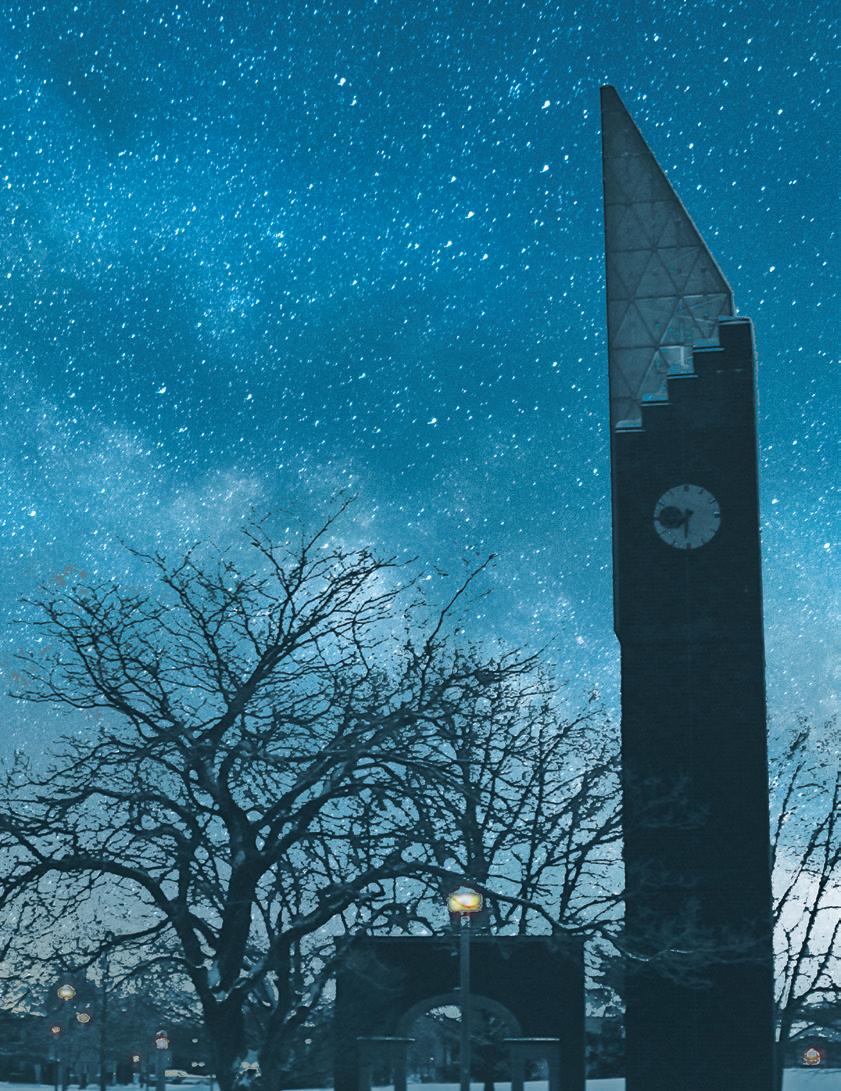
David Duane Kopecky ’68
Larry Dale Mackey ’68
Robert Leo Menzel ’68
Kenneth Emil Polzin ’68
Carol Ann (Conrad) Reiland ’68
Ruth Elizabeth (Heimerman) Spear ’68, ’79
Nancy Katharine (Lowry) Steele ’68
Carllyn Elma (Voehl) Toppin ’68
Lyle George Workman ’68
Ann Carol Abramson ’69
Lois Joan (Hanson) Bolton ’69, ’71
Shirley Jean (Tabbert) Cabot ’69
Gerald John Carey ’69
Richard Vernon Ebnet ’69
Julie A. Ekstam Lyle ’69
Harold M. Flolid ’69, ’83
DeWayne Hart Hamlin ’69
Donna Lee (Menten) James ’69
Cheryl Lynn (Wayne) Kalakian ’69, ’70, ’90
Bruce Kenneth Kruckeberg ’69
Thomas Charles Manske ’69
Olga Reppien (Reppien) Marshall ’69
Jane A. (Nordgren) Schostag ’69, ’72, ’97
Eldon Jerome Skurdahl ’69
Cloyce A. (Cooney) Smith ’69, ’85
Ronald Gary Stockman ’69
Eugene Charles Wann ’69
Harriet H. (Homer) Bakehouse ’70
Thomas Wold Baker ’70
Carol Nadine (Loe) Baudler ’70
Margaret Joan Byrne ’70
Raymond Leonard Callaway ’70
Mary Kathryn Esch ’70
Linda Gail Houge ’70
Karlene Marie (Ruthenbeck) Hubbard ’70, ’74
Connie Mary (Arens) Kozitza ’70
Dennis Allen McNelis ’70
Clifford Alex Mies ’70
Linda Ann (Hutzel) Raine ’70
Deborah W. (Turvold) Reed ’70
Betty Joanne (Madison) Tiedemann ’70
Larry Dean Welsh ’70
Jerome Adam Wetzstein ’70
Nadine Ann (Kruse) WickershamKrull ’70
Julie Ann (Stalheim) Zoet ’70
John Franklin Ault ’71, ’86
Jennifer Lee (Berg) Fick ’71
Marilyn June (Runke) Howell ’71
Marguerite Jeanne (Swenson) Judge ’71
Lonny Arlon Luepke ’71
Jeanette Mary Nordick ’71
Gaylen Edward Ordalen ’71
Emily J. (Busho) Otto ’71, ’90
Gaylord Hallie (Carlson) Schultz ’71
Marilyn Jean (McLaughlin) Stille ’71
Gayle Marie (Tripp) Stortz ’71
Carla E. (Scaglione) Ahlers ’72
Diane Faye (Howlett) Barry ’72
Richard Frederic Bothe ’72
Donald F. Buendorf ’72
William Jay Calvert ’72
Kathryn Kay (Gronewold) Gillespie ’72
Oren J. Hermel ’72
Arlene Raye (Anderson) Hilding ’72
Carol Lea Ives ’72
Michael Emmett Keenan ’72
Rhoda Grace (Scheibert) Knudson ’72
Steven Ellery Olson ’72
Randall Lee Parks ’72
Delores Elaine (Wahl) Paulson ’72
Dorothy J. (Jindra) Pauly ’72
Steven L. Shankland ’72
James Ralph Baumann ’73
Sally Ann (Svendsen) Bonkrude ’73
Richard Joseph Breiter ’73
Ariel Jeanette (Rush) Glad ’73
Donna Jo (Friis) Henning ’73
Margaret Elaine (Seuser) Krumm ’73
Terry A. Madson ’73, ’75
David Charles Miller ’73
David William Mueller ’73
Jerry Wayne Noren ’73
Curtis Jon Oakes ’73, ’81
Linda M. (Parkos) Prigge ’73
Ruth Ann (Kellogg) Sarp ’73
Robert Alfred Schwartz ’73
Daniel Roger Skarp ’73
Emil Carl Frederick Stubenvoll ’73
Russell Wayne Thomson ’73
Kathryn N. (Nesheim) Aarseth ’74
Helen Marie (Byron) Curran ’74
Fleetwood Douglas Davant ’74
Bruce D. Diercks ’74
Roger Dewaine Elfrink ’74
David A Gleason ’74
Joel Edwin Kosbab ’74
Linda Karen (Haugen) Lagoni ’74
Selden Leroy Leighton ’74
James Alan Rasmussen ’74
Jerry Michael Smith ’74
Sharon Louise (Hamann) Vogelsang ’74
Fauntie Elaine (Cutler) Wilcoxon ’74
Karen June Abbott ’75
Ken John Blumberg ’75
Jean Etta (Fenske) Bosacker ’75
Ralph Torsten Carlson ’75
John Edward Chamberlain ’75
John Joseph Daugherty ’75
David William Jensen ’75
Eilene Genevieve (Evenson) Johnson ’75
Curtis Douglas Loewe ’75
Nancy Ann (Rauh) Maloney ’75, ’80
Bradley Steven Salzwedel ’75

Loretta M. Strobel ’75
William R. Warmack ’75, ’76
Robert John Beussman ’76
John Henry Arthur Bremer ’76
Kenneth James Evers ’76
Sheryl Jean Gerk ’76
David Michael Jennings ’76
Ronald Bruce Minske ’76
William L. Roberts ’76
Joanne Marie Rosen ’76
Renee Louise (Baker) Sandy ’76
Thomas Fred Schmiesing ’76
Barbara Ann (Denn) Arnett ’77
Carol L. (Wallen) Daly ’77
Steven Duane Garmann ’77
Jeffrey James Hansen ’77
Patricia L. Murphy ’77
Thomas Leroy Rieland ’77
Douglas Harold Ahrenstorff ’78
Ricky LeRoy Browning ’78
Judith Ann (Bruch) Cherry ’78
Kathleen Marie Christensen ’78, ’81
Reid G. Knutson ’78
Cynthia Ann Nelson ’78, ’86
Loren Alvin Wenzel ’78, ’80
Gary Curtis Brosz ’79
Shirley Irene (Fenlason) Clepper ’79
David Joel Fannon ’79, ’86
Ray John Locher ’79
Marilyn Lee (Anderson) Peters ’79
Mary Elizabeth (Moore) Schwartzbauer ’79
Connie Jean (Irvine) Anderson ’80
Claudia Lee (Obar) Hahn ’80
Arthur Eugene Harris ’80
Linda Kay Hemenway ’80
Donna Mae Margit (Johnson) Hoiland ’80
Deborah Denise (Hofmann) Lanthier ’80
Robert Paul Roche ’80
Ann Marie (Sorenson) Bringgold ’81
Elaine Caroline (Thedens) Eggler ’81
Roland Wayne Goertzen ’81
Margaret Ann Nelson ’81
Lou Ann (Kube) Scherer ’81
Ronald Matthew Deschene ’82
Tamara J (Walker) Mott ’82
James Daniel Owens ’82
James Wilmar Wesley Poehler ’82
Michael James Berry ’83
Theresa Marie (Connelly) Daily ’83
Carol Ann (Thompson) Kreimer ’83
Paul Allan Smogard ’83
Margaret J. (Cook) Waterhouse ’83
Sam Aka Amu-Nnadi ’84
Charles Parks Dahlgren ’84
Ruth Ann Karen (Shervheim) Danger ’84
Michael David Risting ’84
Randall Jon Ryski ’84
Karen (Willaert) Saiki ’84
James Michael Solberg ’84
Robert Edward Therres ’84
Todd Douglas (Hintz) Adler ’85
Ellen Marie (Iverson) Arnsdorf ’85
Beverly Ann (Strand) Blaschko ’85, ’92
Beverly Ann (Larson) Elder ’85
Scott Michael Krenz ’85
Karla JoAnne (Martens) Maurer ’85
Anne Christine (Halvorson) Berberich ’86, ’93
Debra Rose (Kortuem) Herke ’86
Richard Alan Lietz ’86
Donald Frederick Schultz ’86
Daniel Edward Tonn ’86
Grant Paul Block ’87, ’88, ’90, ’04, ’05
Wilma Jean (Tokheim) Cargin ’87
Thomas James Christiansen ’87
Janice Marie (Domeier) Maclay ’87
Mary Susan (Splett) Opsahl ’87, ’05
Robert Ambrose Becker ’88
June Frances (Hallberg) Bowdin ’88, ’90
Jane Darlene (Gulbrandson) Deckard ’88
Donna D. (Sisley) Drganc ’88
John Allen Evanson ’88
Donald Richard Fox ’88
Marvin Dean Gorham ’88
Kristopher Luther Gunderson ’88
Michael Todd Hohenstein ’88
Sharon Lynn (Discher) Johnston ’88
Darcy Rene (Philiph) Ney ’88
Tamera Lee (Werner) Prestin ’88
Brian Jon Batterson ’89
Troy Allen Edwin ’89
Mark Alan Olafson ’89
Scott Bernard Bolduan ’90
Catherine Marie (Vanderbeck) BourretElmquist ’90
Hsiu Yuan Peng ’90
Ronald Phillip Sadtler ’90
Richard Scott Buck ’91
Scott Arthur Ehde ’91
Paul Edward Overlie ’91
Scott Wesley Decker ’92
Joan Louise (Seberson) Hertel ’92, ’05
Lisa Gena (Johnson) Horn ’92
P. Elaine (Nickell) Van Grevenhof ’92
Donna Lee (Schaefer) Watier ’92
Kimberly Ann (Baxter) Koenigs ’93
Anthony Joseph Meyer ’93
Gina Lynn (Griepentrog) Evenson ’94
Darren Valgean Johnson ’94
Jennifer Wright (Sutton) Beitz ’95
Christopher James Kapp ’95
Brenda Christine (Larson) Kelly ’95
Lucille Theresa (Rutkowski) Kempf ’95
Susan Kay Kriha ’95
Lana Renae (Nelson) Tibodeau ’95
Jennifer Diane Hirsch ’96
Elizabeth Virginia (Anderson)
Mihail ’96
Janice Lynn (Kerr) Richards ’96
Theresa Ann (Lobner) Thorland ’96
Duane Mark Duenow ’97
Anita Michelle Heine ’97
Roberto Bernardo Muggli ’98, ’99
Adam Wade Stewart ’98
Sheila Odell Ryan ’99
2000s
Brooks Steven Halverson ’00
James Hinchon Manahan ’01, ’05
LaVonne Ann (King) Nelson ’01, ’03
Matthew Henry Plumhoff ’03
Matthew Ryan Rhoades ’03
Mark Allen Spangler ’03

Virginia Ann (Suker) Suker-Moldan ’04
Susan Marie (Mattson) Schmitz ’05
Robert Daniel Syvertson ’08
Eric Thomas Berreman ’09
Matthew Thomas Kleinschrodt ’11
Kellie Merlene (Kalstad) Peterson ’13
Ariana Elizabeth Ptacek ’21
Donald Lee Aaker
Mary Jane (Benedict) Bair
Kevin James Bigaouette
Timothy Spiers Brown
Judi Ann (Kassube) Davis
Curtis Leon Dornberg
Maureen H. Fenrick
Cheryl Lynn (Wayne) Kalakian
Leigh Lawton
William R. Lecklider
Samuel G. Marcus
Marla Fay (Wacker) Mastin
Gayle L. Morley
Kenneth Emil Polzin
Sharon Lerue (Haugen) Richardson
Bradley Steven Salzwedel
Julio A. Sanchez
Neala Janis Schleuning
Gene Roman Schreyer
Darlene Susan (Sherry) Sitko
James Philip Smith
Jonathan Gentry Thomson
Kathryn (Holland) VanBuskirk
Loren Alvin Wenzel
Charles Keith Ahlstrom
Karin Lee (Larson) Bock
Joyce Lorraine Finkler
Carolyn Ann (Rhoades) Hopfenspirger
Marilyn Kay (Hanson) Holtey
Rand John Jackson
Mary Joan (Curtis) Surprenant
Nick Huynh was a standout student at Mankato East High School where, through advanced placement and post-secondary education option (PSEO) classes, he essentially started college at Minnesota State Mankato at 16.
In the spring of 2023, he graduated from Minnesota State Mankato with honors. Giving a commencement address to his fellow graduates put a figurative cap on a stellar academic journey.
There was a time, however, that Huynh considered dropping out of school entirely.
“I was looking around and this person was better than me, that person was better than me and I thought, ‘Wow, maybe I'm not that great,’” he says. “I felt like an imposter. Like I don't belong here. And I wanted to quit.”
Then he thought about his grandfather, who spent six grueling years in a re-education camp following the Vietnam War. His grandfather’s life lesson afterward was simple: Be strong, and never give up.
That advice, combined with support and encouragement from some key faculty members, helped Huynh get back to doing what he does best: excelling academically.
Huynh is the eighth person in his family to graduate from Minnesota State Mankato—which is a great source of pride to the Mavericks in his family.

His father, Ngon Huynh ’04, also attended Minnesota State Mankato. Ngon says that, given his son’s busy schedule, he wasn’t sure if preparing a commencement speech was a good idea.
“From the beginning he asked me if he should give the speech in the ceremony and I said, ‘I don't know if you have time to do that,’” Ngon says. “But he said he could, and I told him to apply for it. And then he was chosen, and I was so proud of him.”
Nick says that, when his family first came to Minnesota, learning English was difficult. But eventually he was fluent enough to transition from classes at Lincoln Community center to formal schooling in elementary, middle and high schools. By the time he got to Mankato East High School, his academics soared and he decided to start attending classes at Minnesota State Mankato through the PSEO program.
“Reflecting on it, I had a lot of regrets at first because I was seeing all these kids my age enjoying prom and having nice friendships in high school,” he says. “But when I came to college, I made the most of it. I connected with mentors and there's really no other way I could have done this in high school.”
One of those mentors was biology professor Marilyn Hart, who was instrumental in talking him down from his thoughts of quitting college.
“I want to be like her one day. I want to be a scientist,” Huynh says. “I want to drive discovery and impact students and their learning someday.”
When Huynh was at his low point—so low that he actually dropped several classes—Hart reminded him of how much potential he had, and how he could achieve anything he wanted. With that encouragement, and with his family and grandfather’s struggle on his mind, he turned things around.
“Family was what mattered to me. I want to be a good son for them, and I want to pay them back for the things they did for me, especially my grandparents.”
Ngon says he and the rest of the family are extremely proud of Nick’s success. And they say he couldn’t have picked a better place to be the best he could be.
“I recommend he stay close to the family,” Ngon says. “I told him, ‘As long as you study hard and graduate, your future will be very good. You don't have to go to a big school in a big city for a big job.'”
Please list any career changes, awards, honors, marriages, births or memorial information you’d like to see in TODAY in an email to today@mnsu.edu or msuupdates@mnsu.edu
Due to publication schedules, your news may not appear in the next issue. Class Notes may be edited for length and clarity.
Name (including maiden)
Nickname
Graduation year(s)
Major(s)
Degree(s)
Mailing address
City State Zip
Home phone
Preferred email
Professional title or position
Employer
Work phone
MAIL: Editor, TODAY 232 Alumni Foundation Center Mankato, MN 56001
FAX: 507-389-2069 E-MAIL: today@mnsu.edu
ONLINE: today.magazine.mnsu.edu
Update your contact information online: mnsu.edu/alumni/update
Name (including maiden)
Spouse/partner
Graduation year (if Minnesota State Mankato graduate)
Professional title or position
Employer
Employer’s address
City State Zip
Work phone Notes
How may we share the information you’ve provided to us here (contact information will never be shared)? Check all that apply: Print version of TODAY Online version of TODAY On University social media sites
Minnesota State Mankato’s homecoming this year takes place Oct. 2-7, culminating with the parade and homecoming football game on Saturday, Oct. 7.

PRESIDENT’S PANCAKE BREAKFAST
9 to 11 a.m. Saturday, Oct. 7
President Inch helms the griddle for a free pancake breakfast on the campus mall—near the iconic fountain.
WOMEN’S VOLLEYBALL
11 a.m. Saturday, Oct. 7. The women’s volleyball team takes on Northern State in Bresnan Arena.
PARADE
11 a.m. Saturday Oct. 7. The traditional homecoming parade takes place from 11 a.m. to noon along Warren Street.
MAVERICKS ON THE MALL
11:30 a.m. to 1:30 p.m. Saturday, Oct. 7. A new Homecoming feature with music, food, games, and a fair of college and activity booths—definitely something for everyone.
MAVERICK FOOTBALL GAME
2 p.m. Saturday, Oct. 7. The Mavs take on Moorhead for the homecoming game. Tickets at msumavericktickets.universitytickets.com. $10 adults, $5 seniors and youth. (Current students free with MavCard.) Plus a full week’s worth of Maverick celebrations on campus. For more information, visit mnsu.edu/homecoming. Make your plans to join—and we’ll see you there!
